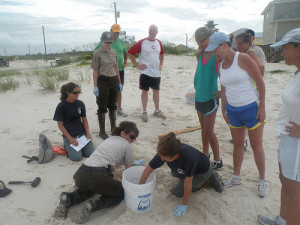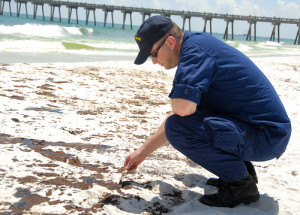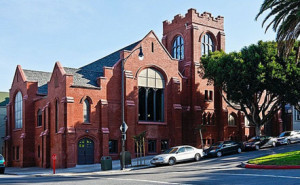Archive for the 'Relocation' Category
August 4th, 2010 by
Admin
Categories:
Celebrity Real Estate,
design and decorate,
Do It Yourself,
exterior projects,
foreclosures,
Home Improvement,
homes for sale,
interior projects,
Moving,
Real Estate,
Relocation,
rentals Comments:
No Comments » By Serena Norr
What an exciting week in the world of celebrity real estate. The home that Michael Jackson rented before he died was listed on the market for a whopping $28,995,000! With seven bedrooms, a game/media room, a theatre and a pool the new owner will never have to leave the property. Meg Ryan also made an appearance on the Beat for leasing her home for rent. Asking price? A mere $40,000 a month — or what we figure is better spent on two years worth of rent. Christie Brinkley is also in the news for placing her beachfront home on the market. She is reportedly a huge fan of home improvement projects but cited lack of time to maintain the property as one of the reasons for the listing. We also reported on the foreclosure of Damon Dash’s (co-founder of Roc-A-Feller Records) NYC condos. Dash reportedly fell into the old spending-more-than-what-you-have bit and was unable to pay his $78,504 monthly mortgage payments.

The estate of the late Michael Jackson - Listed for $28,995,000. (Photo Credit: The Real Estalker)
• Michael Jackson’s Home on the Market for $28,995,000
Yes, those numbers are correct and yes, this is the very home that Michael Jackson rented for $100,000 a month before he passed away in June of 2009 (owner is Hubert Guez, CEO of Ed Hardy). This Holmby Hills estate (located in Los Angeles) is certainly fit for a King, or maybe just the King of Pop. The list of amenities goes on and on for “French Chateau” such as a wood-paneled den, a library, a modern eat-in kitchen, seven bedrooms, 13 bathrooms, seven garage spaces and 12 fireplaces all of which is situated on 1.26 acres of land. On top of all, the 17,171 square feet home (about $1,689 per square foot) also has a wine cellar, a media room, an art studio, a movie theatre, an indoor bar, a spa and a gym, lush gardens and greenery and an heated outdoor pool. Property listings describe this luxurious and gated abode as a “major achievement in design and proportion, incorporating classic design and impeccable craftsmanship and offering the perfect integration of charm and elegance in a world-class setting.” With that asking price and all that is included we wonder what King or Queen will be the reigning owner of this property.

You too can enjoy Meg Ryan's pool -- Listed for rent at $40,000 a month. (Photo Credit: Zillow.com)
• Meg Ryan Renting Her Home for $40,000 a Month
Back in October, actress Meg Ryan listed this California home for $14.2 million only to be removed from the property listings a mere two months later. According to Zillow.com, Ryan has now listed her Spanish-style Bel Air home for rent at $40,000 a month. A bit steep for a lease but the world of celebrity real estate follows its own set of rules. And for whoever can afford this agreement will have quite the gorgeous beachfront estate to look after. The spacious home includes six bedrooms, seven bathrooms, four fireplaces and of course stunning views of the ocean. There is also hardwood flooring, open archways, wood-beamed ceilings and a modern kitchen with state-of-the-art appliances. There are no reports as to how long the rental agreement would last.
• Hip Hop Mogul Damon Dash Losses Home to Foreclosure
Damon Dash, Co-Founder of Roc-A-Feller Records recently lost his TriBeCa condo to a foreclosure. Sold for $5.5 million, Dash reportedly stopped paying his $78,504 in mortgage payments on his two condos — one on Moore Street and the other on Laight Street. (We wonder why one would need two condos in the same neighborhood but perhaps that is a part of the whole celebrity real estate conundrum.) Dash attempted to sell the Moore Street condo right after the real estate market crashed for $7.9 million and again for $5.75 million in 2009 with no interested buyers. Since he was unable to pay his loan, Dash was sued twice and finally ordered to put his home through the auction process by the New York Supreme Court. A California-based finance firm, Platinum Capital, purchased the home. His second home (on Laight Street in NYC) went unsold and was taken over by Eastern Savings Bank.

Steve Carell's new home -- Purchased for $6 million. (Photo Credit: The Real Estalker)
• Steve Carell Buys Home for $6 Million
Steve Carell of “The Office” recently purchased 1.27 acre estate for $6 million dollars. Located in Toluca Lake, California, the 5,126-sqaure-foot home includes six bedrooms, five bathrooms, a pool house and a tennis court. Toluca Lake is home to many celebrity neighbors that Carell can soon mingle with. According to the Real Estalker, Eric McCormack, Markie Post, Swoosie Kurtz, Andy Garcia, Demi Lovato, and Ashley Tisdale all live in Toluca Lake.”

Christine Brinkley's home -- Listed for $15.75 million. (Photo Credit: Luxist.com)
• Christie Brinkley Lists North Haven Home for Sale
Model/socialite and real estate investor Christie Brinkley recently listed her New Haven home on the market for $15.75 million. Built in the 19th century, the waterfront home not only has gorgeous views of the beach and the surrounding bay but is surrounded on 4.5 acres of land and 327 feet of beachfront. The 5,500-square-foot columned mansion has five-bedrooms, six bathrooms, four fireplaces and an outdoor pool. Brinkley cited busyness and an inability to maintain the property as the reason for the sale. She has an avid interest in home improvement projects stating “love fixing up old houses, but my life is so busy between with my children, launching several new businesses and my philanthropy, I just don’t have time.”

BON SECOUR NATIONAL WILDLIFE REFUGE , Ala. - Relocation procedures for sea turtle that are too close to the tideline. (Photo Credit: U.S. Fish and Wildlife Service photo by Bonnie Strawser)
By Serena Norr and Joann Pan
As we discussed in the first part of this series “The Devastating Impact of the BP Oil Spill on Real Estate,” the oil spill off of the Gulf Coast has not only affected our waters, marshes, animals and our health, but the “worst spill in history” has also greatly impacted the real estate industry. Although we are happy to hear that engineers have been able to stop oil gushing from the well [LA Times Blog], there is the looming question pertaining to the state of real estate in Alabama and Mississippi. Early numbers are estimating that the oil spill will “drive down the Gulf’s property values by 10 percent for at least three years,” according to CoStar Group Inc [Bloomberg]. The International Property Estimate stated that “losses may total $4.3 billion along the 600-mile (966- kilometer) stretch from the Louisiana bayous to Clearwater, Florida.”
Since April 20th, new property developments in Alabama and Mississippi have been put “on hold” and commercial properties such as hotels that are suffering from a decline in tourism and the inability to provide certain supplies such as with restaurants that can no longer offer fresh and local shrimp, oysters, etc. Some of these real estate issues are not immediate, but will impact these areas long after the spill has been cleaned. Will people want to relocate to an area that was once covered in oil — whether directly or nearby? Will the water ever be clean enough for fishing? Will tourism pick up? As the pieces are starting to be picked up and clean-up efforts are prevalent in the Gulf, we will be keeping a watch eye, hopeful that we will be able to report on positive news from the Gulf.

GALVESTON, Tx - Cleaning up tar balls off on Galveston beaches. (Photo Credit: U.S. Coast Guard photo by Petty Officer 2nd Class Prentice Danner)
Alabama’s Businesses Suffer Including Restaurants, Condo Owners, Shops Owners and Fishing Industries
For three months, after the media has continually projected the dismal prospect of coastal communities affected by the BP Oil Spill to the rest of the world, the states lining the Gulf of Mexico are seeing and feeling the onset of low numbers of tourists and homebuyers. When President Obama went to see the effects of the BP oil spill on the state in mid-June, Governor Bob Riley and the communities of Alabama were relieved to have president see the effects for himself. In a speech, the president addressed the jabs that the tourism and fishing industries have suffered. The lives of Alabama’s shop owners, restaurateurs, commercial and sport fishermen and those in real estate have not seen normal business for about three months [Montgomery Advertiser]. As oil continues to wash to shore, it’s not the effects on the beaches that worries community members, but the state’s precious marshes, estuaries and wetlands that will be lost. Tourism is also down, which is evident by the pictures of empty beaches that would normally be flooded with people. There are men bringing booms down to the waters—approximately 10,000 feet of booms a day to keep the oil at bay.
As soon as the oil started leaking—rather gushing relentlessly into the Gulf of Mexico—officials and professionals have been implemented quick clean-up of the space. As personnel continue to tread the waters of the Gulf, people are coming forward with disaster-related illnesses. In Louisiana, their Department of Health is aware of 71 cases and in Alabama, there are 15 reported illnesses—a mix of respiratory problems and skin irritations [CNN Health]. As soon as news like this hits to mainstream, areas where tourism and properties are hot start to see businesses fade.
The NY Times painted a dreary picture for us on July 5 by running a feature about an Alabaman seaside Inn that has seen the scary effects of the oil spill that include a lack of bumper-to-bumper traffic along Perdido Beach, minimal diners at coastal restaurants, missing swimmers in the water and a diminished population of seagulls riding up the coast. And in the place of those summer beach expectations are tar balls and lines of oil that have layered themselves in the daily repetitions of low tide and high tide that brings new sand and oil on shore. The building’s owner is Jerry Gilbreath, 61, who bought the structure in 1980 and turned it into a successful bed-and-breakfast. Now, Gilbreath, like other resort, hotel and property owners in Alabama are struggling to meet ends meet. To give you an idea the inn made $21,000 last June, but only made $6,000 this June, a month after the drum of oil starting leaking [the NY Times].

NEW ORLEANS - Debris and oil in the Gulf of Mexico from the Deepwater Horizon drilling.
Mississippi’s Job Loss, Real Estate Outlook and Tourism Industry
Since the oil spill, 4,500 unemployed workers in Alabama, Louisiana, Florida and Mississippi have been hired to clean the beaches– raking and shoveling debris, taking out trash and using power loaders to wash away oil-covered rocks [CNN Money]. Although finding work is always a positive sign (especially since Mississippi has an 11.5 percent unemployment rate), the conditions in which these workers were hired is not something residents of these Gulf States were expecting.
The immediate impact of the spill is not the only matter at hand, but one that Mississippi will be dealing with years after the spill; especially when pertaining to real estate. Recently, several real estate agents and brokers have requested $20 billion dollars as compensation for the loss of sales due to the oil spill. Kenneth Feinberg, a Washington attorney who is working on organizing money for the victims, stated “The Realtors and real estate brokers are a major political force. I’m hearing from them constantly. I’m not sure whether they have a valid legal claim.” As of now, these claims fall into the category of “tough eligibility decisions,” whose issue will be further explored through an independent committee held next month [SunHearald.com].
There is also the issue of the loss of jobs and tourism in Mississippi. A University of Mississippi study found that the oil spill could cost Jackson, Harrison and Hancock counties nearly $120 million in the tourism and service sectors; while the Mississippi Development Authority estimated that tourism was down statewide and about “seven percent in fiscal 2010 to $5.2 billion” [Insurance Journal]. Hit the hardest right now are non-casino hotels, which are down by $50 million and services related to tourism such as restaurants, beverages and food and area beaches (even though no oil has been washed onto Mississippi’s beaches). According to David Bulter, a professor who conducted the survey, these figures are related to the “negative images portrayed by the national news.” There has also been a decline in charter boats and recreational and commercial fishing.
Now that the leaking has been stopped by a temporary cap—until further measures can be made, that is—we wait and hope for positive news in the upcoming months.
Sources and Additional Reading:
All photos are from Deepwater Horizon’s flickr page- http://www.flickr.com/photos/deepwaterhorizonresponse/
July 28th, 2010 by
Admin
Categories:
Celebrity Real Estate,
design and decorate,
Do It Yourself,
exterior projects,
foreclosures,
Home Improvement,
homes for sale,
interior projects,
Moving,
Moving Day,
Real Estate,
Relocation,
rentals Comments:
No Comments » By Serena Norr
At Relocation.com, we are big believers in renovating your home or apartment for obvious reasons (like say, repairing a faulty toilet or fixing broken tiles) or to enhance the look and feel of your house. For homeowners, these projects may increase the value of a home, which can be rather helpful when you are seeking to sell. However, when you spend $50 million (yes, I said $50 million dollars) for a home renovation, we have clearly entered into the mysterious and costly world of celebrity real estate. This exact transaction recently took place in NYC when the designer, Tommy Hilfiger forked over $50 million buckaroos to redesign his duplex. Pictures of the gorgeous home were taken by Harper’s Bazaar so we can all admire the “European-inspired” home from afar and truly see what you can do to your home when money is no object. This week you can also read more about Cameron Diaz who purchased Candice Bergen’s Beverly Hills home for $9.4 million. The homes of the late Jim Morrison and the late Ed McMahon are listed for sale, as well as Sasha Baron Cohen’s home that is listed on the market for $2.9 million. Let us know which home sounds interesting to you. Until next week…

Newly redesigned dining room of Tommy Hilfiger -- The renovations cost the designer $50 million dollars. (Photo Credit: Harper's Bazaar)
• Tommy Hilfiger Renovates Home for $50 Million
Clothing designer Tommy Hilfiger recently renovated his two-floor NYC duplex for the hefty price tag of $50 million. This home improvement project has been in the works for two years to create “an old-world atmosphere complementing the old-world Plaza,” as Hilfiger stated to Harper’s Bazaar. The project involved a complete gut renovation of Hilfiger’s 6,000-square-foot duplex to create a glamorous/vintage European-vibe. And that it certainly is. The newly redesigned duplex now includes a gorgeous Maison Jansen dining room table, crystal chandeliers, a nautical-themed kid’s room complete with a ship bed and a French Renaissance-style turret featuring an Eloise mural by Hilary Knight. There is also a 20-piece collection by Andy Warhol, paintings by Jean Michel Basquiat and an American flag painting by Jasper Johns that Hilfiger is reportedly interested in buying. The home also features a private domed terrace, which overlooks Central Park that was redesigned with checkered flooring, a black sitting table and custom cut plants.
Check out more photos of Tommy Hilfiger’s Plaza home as featured in Harper’s Bazaar.

Jim Morrison's former dining room -- Listed for $1.1 million. (Photo Credit: Zillow.com)
• Jim Morrison’s Laurel Canyon Home for Sale
The Laurel Canyon home of the late Jim Morrison has recently been listed on the market for $1,199,000. Previously sold for $535,000 in 2001, the rustic 2,300-square-foot home is reportedly where Morrison did a lot of his song writing and hung out in the 1960s. The quaint home includes three bedrooms, open beamed ceilings, distressed wood floors, iron fixtures and a outdoor deck with a fire pit, gym and shower, as reported on Housing Watch. The new owner may also discover some of Morrison’s writings behind the wall of an indoor shower where he reportedly kept some of his poetry and songs – Strange Days, indeed.
• Cameron Diaz Buys Candice Bergen’s Beverly Hills Home
According to the Real Estalker, Cameron Diaz recently purchased Candice Bergen’s Beverly Hills home for $9, 447,500. Originally listed for $10,250,000, the 5,000-square foot home features four bedrooms, 4.5 bathrooms and a detached guest house that encompasses almost an acre of land includes another three bedrooms and two bathrooms. The sophisticated home also features hardwood and tiled flooring, high ceilings and an outdoor area with a pool, tennis court, gardens and a spa.
• Sacha Baron Cohen Lists Los Angeles Home for $2.9 Million
Sacha Baron Cohen aka the man behind “Ali G” and “Borat” recently listed his 2,806-square-foot home on the market for $2.9 million. The single-story Los Angeles abode features three bedrooms, 2.5 bathrooms, a detached guest room and a two-car garage. Other amenities in the house include hardwood flooring, a fireplace, French doors leading to the dining room, a modern kitchen with stainless steel appliances and white cabinets and an outdoor deck with a pool and spa.
• Ed McMahon’s Beverly Hills Home on the Market for $4.6 Million
The home of the late Ed McMahon is on the market $4.6 million. Originally listed in 2008 for the same price, the Mediterranean-style is located in a gated community in Beverly Hills that overlooks canyons and a sprawling yard. The California estate includes six bedrooms, 5.5 bathrooms, fireplace and a swimming pool. The seller (who was also a friend of McMahon’s) made significant home improvements on the 7,013-square-foot estate that faced foreclosure in 2008.
By Joann Pan
Having been to London, England a couple times during my college years, I got little tastes of British life during week-long trips over official breaks from school. Now thoughts of these trips have amounted to a desire not only to vacation, but to relocate to England. I imagine myself visiting Harrods for fresh seafood or some other awesome concoction in their renowned cafeteria or to spend my days visiting the cool (and free!) museums or simply taking a stroll thinking of all of the people I would meet. I now reminisce about the fields of green that I walked through, juxtaposing itself with the busyness of the City of London. This feeling of longing to move is one shared by many other Americans who have thought of ditching their hurried way of life—fueled by Starbucks—for something more abroad. There are 195 countries in the world today; why live in just one?
England is one of the top places for American expatriates simply for the fact of the common language. Communication is huge, but more of us are moving to England due to the areas stark commonalities to the U.S. such as its similar food, entertainment, technology and cultural amenities. We are also convinced to know England because we’ve seen all the movies based out of English cities like Manchester, Liverpool, Leeds, Newcastle, Bradford, Nottingham and others. We want the UK-typical adventure being offered up in “Wuthering Heights” (1936) or the “Harry Potter” series. So, here’s the plan: trade in my 9-to-5 routine and daily treks through the concrete jungle for afternoon tea, run-ins with The Queen and stopping every so often to sample the best fish and chips in the world.. My plans may be far-fetched, but what we need to get there isn’t. Stay a while and read Relocation.com’s guide to moving to beautiful England. Even better, Scotland is right above, Wales adjacent on the West and the English Channel to the South, along nearby Paris and Belgium. But before you go, check out some of the essentials you’ll need to traverse the sea as you make one of the most exciting moves of your life!

Pack your bags -- it's time to relocate to England! (Photo Credit: http://www.flickr.com/photos/dpattinson/412897896/)
Number 1: Obtain a Work Visa
Now, you didn’t think the United States was going to make it easy for you, did you? The first hurdle of moving out of the country will be obtaining for visa, which will grant you permission to work in the U.K. You can’t show up with a Holiday Visa and expect to find work—you will be turned away at the airport, most likely. There is a variety of visas you can get. They seemingly are tailored to what you need abroad—whether you are a student, temporary employee or trying to start a business. Available visas include: a Work Permit that requires you to receive sponsorship from an employer in England, a Tier 1 Visa for Highly Skilled individuals or a Tier 1 Entrepreneurs Visa that allows someone to set up or take over a business in the UK. We recommend going to the Skillclear Website or the UK Border Agency’s official Website for more inquiries about the different visas you can obtain.
Number 2: A Bank Account
In order to obtain an bank account in England you will need your passport, a letter from your current employer in England and proof of residency. These documents may be hard to obtain, if you are in the middle of the move and haven’t found a job yet. If possible, you should check with your local bank to see if you can switch to a UK branch before departing America with your global bank such as Citigroup, HSBC, Deutsche Bank and others.
Number 3: Health Care
The National Health Service (NHS) provides free hospital care and medical consultations to those with UK Work Permits and their dependents. Anyone who is in an accident or emergency situation gets free medical attention and treatment, no matter what the status of their visa. Most people in the UK see a general practitioner. We recommend going to the NHS official website to find a general practitioner in your new English home: www.nhs.uk/England.
Number 4: A Car
You will probably need a car to get around most parts of England because of the great disparity in rural parts and suburban parts of town. You will notice people drive on the left side of the road. American drivers will have to get used to the narrowness of all the roads and the lack of billboards on the highways. This is an effective way to move around different cities and towns in England. But, before experiencing the open roads, you will need to get a driver’s license as well as other paperwork. Licenses issued in countries such as Australia, Canada, Japan, New Zealand and South Africa may be traded in for a Great Britain driver’s license. More information about licenses may be found here at: www. Dvla.gov.uk. Once, you buy a vehicle, you will have to register it in the UK to be taxed. For more information: www.direct.gov.uk/.
Number 5: Moving professionals to help you move
Whether it’s storage or moving overseas with international movers, you will need professional, experienced help with such a big move you are planning. You will have to hire a company that can handle shipping all your furniture, clothes and other life necessities by ocean in a large metal container. To ensure you have chosen the best moving company with the best prices, compare prices early of licensed moving professionals [More on how to choose a mover].
Here, you have it. Just a condensed version of what you need to ensure you have the smoothest ride to your new life based in England. For those who are in the middle of a move or for those who have already moved, please leave your own ideas and tips for Americans hoping to move to England.
Additional tips for your next move:
• Don’t make these five overseas moving mistakes
• Tips on Moving Internationally
• Before an Overseas Move, Check on Customs Regulations
Joann Pan is a freelance writer and photographer based in New York City. She has interned and contributed to Buffalo Spree Magazine and Racked NY.
July 21st, 2010 by
Admin
Categories:
Celebrity Real Estate,
design and decorate,
Do It Yourself,
exterior projects,
foreclosures,
Home Improvement,
homes for sale,
interior projects,
Mortgages,
Moving,
Moving Day,
Moving Industry,
Packing,
Real Estate,
Relocation,
rentals Comments:
No Comments » ![rushop[1]](http://blog.relocation.com/wp-content/uploads/2010/07/rushop1-300x276.jpg)
The ornate abode of Rush Limbaugh -- Sold for $11.5 million. (Photo Credit: Corocan via the Wall Street Journal)
A few politicos made “the Celebrity Beat” this week. The “Lion of the Senate” aka the late Ted Kennedy’s Washington, DC home was recently placed on the market for $7,995,000. This massive Colonial-style estate includes five bedrooms, six bathrooms, a wine cellar and a personal gym designed by “the Terminator” or Governor Schwarzenegger, as he is referred to these days. On the right side of the political spectrum, Rush Limbaugh’s Upper East Side penthouse was sold for $11.5 million to an undisclosed buyer. Limbaugh has been stating he has wanted out of New York due to the city’s high property taxes — but if you have an $11 million dollar home, we are thinking you have sufficient funds to pay good-old Uncle Sam. To light things up a bit, comedians Cheryl Hines and Adam Carrolla are both selling their California homes. Hines’ home is situated in Brentwood overlooking the mountains; while Carrolla’s home overlooks downtown Los Angeles that was also personally designed and renovated by Carrolla.

Exterior Shot of the Late Ted Kennedy's Home -- Listed at $7,995,000. (Photo Credit: Zillow.com)
• Ted Kennedy’s Home on the Market for $7,995,000
The Washington, DC home of the late Ted Kennedy (Kennedy passed in 2009 after a long bout with brain cancer) is on the market for $7.95 million. Purchased in 1998 for 2.7 million, the 8,900-square-foot home includes five bedrooms, six full-sized bathrooms and two half baths, a wine cellar, an indoor and outdoor pool, a secret hideaway from the library and an indoor gym designed by no other than the movie star-turned-gobernador Arnold Schwarzenegger! Described as a “Colonial-style home” whose decor features long white columns, French doors, high ceilings, an outdoor terrace, gardens and a massive dining room that is customized to fit 50 people. Listed by Vicki Kennedy (Kennedys’ widow), who is seeking a smaller home in Washington, DC. According to the Wall Street Journal, the home is “quietly being shopped around” with no current buyer.

Exterior View of Cheryl Hines Brentwood Home -- Listed at $4,249,000. (Photo Credit: Paul Barnaby via the Wall Street Journal)
• Cheryl Hines Lists Brentwood Home for $4,249,000
Comedian and “Curb Your Enthusiasm” star Cheryl Hines recently listed her walled and gated Mandeville Canyon-area estate for $4,249,000.The 4,908-square-foot home sits on an acre of land that features stunning views of the nearby California mountains and new furnishings and renovations throughout the properties open-floor plan. If that isn’t enough, perhaps the homes six bedrooms, 5.5 bathrooms, a guest house and an outdoor pool with massive trees throughout the property may entice you to buy?

Joe Torre's home includes an indoor swimming pool -- Listed at$1,175,000. (Photo Credit: Zillow.com)
• Joe Torre’s Home Listed for Auction at $1,175,000
Joe Torre, former coach of the New York Yankees and current coach of the Los Angeles Dodgers has recently placed is New Rochelle, New York to be sold via a public auction. Located 30 minutes from Manhattan, the 6,500-square-foot home is listed at $1,175,000 that is expected to exceed the asking price. Some notable features about the two-level property includes six bedrooms, five bathrooms, an indoor pool and a three-car garage all of which is situated on 1.01 acres of land. The first level features a family room, a fireplace, and a large kitchen; while the second level has a master suite, guest rooms and a laundry room. Owners of the property will also become stockholders of the estate property company. For more information on the auction, visit BidOnTheCity.com.

Rush Limbaugh's master bedroom complete with a ceiling mural -- Sold for $11.5 million. (Photo Credit: Corocan via the Wall Street Journal)
• Rush Limbaugh Finds Buyer for NYC Penthouse
On another side of the political spectrum, conservative pundit Rush Limbaugh has found a buyer for his Upper East Side NYC penthouse. Originally listed for $13.95 million, the undisclosed buyer will pay $11.5 million for the condo, according to the Wall St. Journal. The full-floor penthouse overlooks Central Park and features 10 rooms, four terraces, a 30-foot-wide living room and a private elevator. The new buyer will also enjoy personal decorating touches of the conservative talk-show host such as ornate wall designs and a mural of clouds and birds in the master bedroom, along with various ceiling murals throughout the penthouse featuring palm trees and the beach. Limbaugh is relocating from New York due to the high property taxes, which he announced in February on his radio-show entitled “El Rushbo to New York: Drop Dead.”

Adam's Carolla's Home for Sale-- Listed at $1,395,000. (Photo Credit: the Luxist)
• Adam Carolla Lists Home for $1.3 Million
Comedian, Adam Carolla recently put his Beachwood Canyon home on the market. Carolla – who also owns two other properties in the Los Angeles-area – personally did all of the renovations on this three-bedroom as stated on the Luxist, “the home was totally rebuilt, piece by piece, like a restoration of an old car with modern equipment.” With a contractor background, Carolla spent at least $350,000 in home improvements on his 2,281-square-feet French-style home. The “ultimate bachelor pad,” that was “overbuilt,” as stated by Carolla, includes some interesting features such as an office, an indoor and outdoor bar, an updated kitchen with state-of-the-art appliances and a soundproof basement. The exterior of the house is also pretty impressive, which resembles a castle and overlooks downtown Los Angeles and views of the Hollywood sign.



THEODORE, Ala. – An oiled gannet is cleaned at the Theodore Oiled Wildlife Rehabilitation Center. Photo by Petty Officer 3rd Class Colin White.
By Serena Norr and Joann Pan
The numbers are startling: 60,000 plus barrels of oil a day [The NY Times], thousands of fishermen without work [CNN] and an expected 30 percent decline in home values [Housing Watch]. By now, we have all heard about the devastating events that took place on April 20, 2010 – an oil rig exploded off of the Gulf of Mexico spreading crude oil and toxins [including the poisonous Corexit [The NY Times] along the shoreline. Deemed, the “worst oil spill in U.S. history” [National Geographic], the consequences of this unfortunate event have caused an environmental upheaval – affecting our water, marshes, animals and some believe, our health.
Being in the moving industry, we are also greatly concerned with how the spill is affecting the real estate industry – specifically commercial and residential properties, new developments and vacation homes. Some of the affects of the oil spill are already apparent: restaurant owners fear not having fresh fish will put them out of business [McClathchy], hotels are fighting to stay open [The NY Times] and once thriving tourist areas have become ghost towns [CBS News]. A survey conducted by Greater New Orleans, Inc, entitled “Potential Economic Impact of BP Oil Spill” indicated that “50 percent of businesses said they are expected to be hurt by the spill – citing direct interruption of their business due to the spill or false perceptions of the oil spill; while 53 percent of businesses stated they will need outside assistance to regain their losses.” Part of this assistance will come from an independent compensation fund established by the U.S. government — who will toll out $20 billion to compensate those who were greatly affected [CNN]. Although, this is a sizeable amount, there has been no indication as to whether this will cover personal property loss.
Not only an issue for the present, we wonder how the spill will affect the real estate industry in a few years. Will people be excited to build and vacation in the Gulf? Will commercial properties thrive again? Will BP award sufficient money to cover these devastating losses – ranging from fishing, tourism, ecological preservation to real estate? As we follow the headlines, we can only think of the worst in order to prepare best as we learn more about this awful spill in our two-part BP real estate series.

PENSACOLA, Fla. - A Coast Guard inspects oil that has washed onto the beach. Photo by Tech. Sgt. Emily F. Alley.
How the BP Oil Spill is Affecting the Coastal State of Florida
We are quickly approaching the two-month mark of the Transocean Ltd. Deepwater Horizon Oil Spill where (at press time), we learned that BP engineers have been able to stop oil gushing from the well [LA Times Blog]. Although, a welcome relief from the disparaging news we have heard since April; there is still a lot of work to be done. More than 93.5 million to 184.3 million gallons of oil have escaped the bruised well into the Gulf of Mexico [LA Times Blog] making its way down to the coastlines of our southern-most states.
So far, the oil has made its way to the coastlines of our southern-most states — estimated to be 130 miles long and 70 miles wide. Florida’s Governor Charlie Crist has already declared a state of emergency as the oil reaches the Panhandle. The oil slick covers 69 miles of Florida, 328 miles in Louisiana, 108 in Mississippi and 67 in Alabama, according to The Governor of Florida’s Website. Tar balls have been recovered on Pensacola Beach and the Perdido Key.

PENSACOLA, Fla. - Workers cleaning oil. Photo by Tech. Sgt. Emily F. Alley.
The BP Oil Spill will definitely bring long-term effects to Florida that at this time unforeseeable. The Palm Beach Post of Florida estimates that Florida will have a loss of 195,000 jobs and nearly $11 billion in revenue losses. These numbers were estimated by a University of Central Florida economist who believes the southern state will suffer from lack of jobs — especially Pensacola fishermen — and from decreased tourism to the nearby Orlando theme parks and the Palm Beach luxury hotels. [The Palm Beach Post] However, the local media outlet does expect reimbursements from BP itself for the canceled reservations over this current summer season, the loss of fishing, clean-up fees, and for other local effects from the nearby explosion of the rig.
The St. Joe Company (NYSE: JOE) is one of the biggest landowners in Florida and has also had one of the toughest times in the midst of the oil spill. With approximately 580,000 acres of land, mostly in Northwest Florida, St. Joe has made a great business based on tourism and owning eight luxury resorts near the Panhandle. According to
realestatechannel.com, St. Joe has refunded money for approximately 151 coastal homes and for a 60-room inn because of the oil. Many local companies are giving out refunds because of people afraid of the effects of the oil spill. St. Joe and other organizations are tackling the BP Oil Spill by asking for reimbursements of business lost and interrupted.
Another case of loss in the situation in Florida is that of Naples beachfront homeowner Cynthia Joannou, who is suing BP for causing environment issues for homeowners who own property along the coast and who will deal with long-term issues, according to m.naplesnews.com. Joannou claims that homebuyers are shying away from moving to Florida strictly because of the cumbersome oil spill. These losses will amount up to $4.3 billion along the entire 600-mile coast line from Louisiana’s bayous to Clearwater, Florida in property estimates, according to Bloomberg. A local realtor in the same article said that this environmental travesty is “the knockout punch the Great Recession didn’t deliver.”
Loss of Jobs, Homes and What is to Come in Louisiana
More than 65 miles of Louisiana’s shoreline—including its beaches and wetlands—are now covered in oil, according to Louisiana’s Governor Bobby Jindal, as stated on The Boston Globe. What once was a vibrant fishing community, thriving vacation spot and an area beginning whose real estate market was revitalizing is once again back in the national spotlight – only five years since Hurricane Katrina.

NEW ORLEANS – Rescue of a loggerhead sea turtle. Photo by Seaman Grace Baldwin.
As a result of the BP Oil Spill, it is expected that Louisiana’s real estate market will drop from five percent to 15 percent in the next 12 months. Home builders – who are still rebuilding – from the devastating effects of Hurricane Katrina have delayed or stalled numerous projects along the Gulf. According to real estate agent Carolyn Angelette, 100 of her clients have canceled their vacation rentals in Grand Isle, Louisiana, as stated on the blog, The Coming Depression. Other reports in Bay County have indicated that housing developments have simply stopped. Tom Ledman, president of the Home Builder’s Association of Panama City-Bay County stated there are no signs as to when construction will start up again [News Herald].
Louisiana’s job market is also estimated to be affected by the oil spill. Based on the “Economic Impact of the Moratorium and Oil Spill” study, it is estimated that 22,000 people will loss their jobs as a result of the oil spill with an overall loss of $8 to $15 million dollars per month – indicated by the surveys worst case scenario model. Jobs such as the fishing industry are also believed to take the biggest hit – bringing $500 million dollars in revenue to Louisiana, followed by processors and then the tourism industry, according to the survey conducted by the Greater New Orleans, Inc. The survey states that encouraging eco tourism, a positive vibe and not selling your home are critical during this disparaging time.

JEFFERSON PARISH, La. Bay Jimmy is one of the more impacted zones remaining in the area. Photo by Petty Officer 3rd Class Zac Crawford.
The issue at hand within the property market has plummeted across the southern coast of the United States. Hotels and home owners are having trouble keeping up with mortgage payments. Many media outlets have reported a total exposure of $136.4 billion to commercial real-estate owners and developers in affected states Alabama, Florida, Louisiana and Mississippi.
Follow us in a few weeks, as we weigh-in on how the oil spill has affected the real estate market in Alabama and Mississippi.
Sources and Additional Reading:
All photos are from Deepwater Horizon’s flickr page- http://www.flickr.com/photos/deepwaterhorizonresponse/

Dr. Phil's home -- listed at $16.5 million. (Photo Credit: Marc Angeles/Unlimited Style.com)
By Serena Norr
This weeks “Celebrity Beat” is packed with exciting real estate reports from New York to California. Starting in New York, Bill and Hillary Clinton have reportedly been eying a home in Bedford Hills (a mere eight miles from their Chappaqua estate). The Bedford Hills home will be quiet the upgrade for Bill and Hillary with 20 acres of land, 7,000-square-foot of living space and more importantly will provide the couple with “privacy and security.” In California, Dr.Phil (of the “Dr. Phil” show and “Oprah”) recently listed his Mediterranean villa for sale at $16.5 million for a larger casa in the Hollywood Hills. It was also reported that Gwyneth Paltrow and Chris Martins’ home was “stripped down” and recreated by the New York City design team, Roman and Williams — resulting in a space filled with shimmery textures and pastels. Lady Gaga also made this weeks Beat for reportedly leasing a Bel-Air home for $25,000 a month — an amount many of us would pay for a years worth of rent.

Exterior shot of Lady Gaga's new rental. She is leasing out the Bel-Air home for $25,000 a month. (Photo Credit: Zillow.com)
• Lady Gaga Renting Bel Air Home
The ever provocative pop star, Stefani Germanotta – better known as Lady Gaga – recently leased a Bel Air home for $25,000 a month. This rock star-style pad is situated on an acre of land that is both walled and gated and fully furnished, featuring a number of Marilyn Monroe pictures that don the walls. According to Zillow.com, the home is owned by real estate developer, “Lorne Leibel who purchased the home in 2004 for $3,150,031 that was later listed for $4,750,000 in 2009.” The 6,143-square-foot pad also features six bedrooms, eight bathrooms, marble flooring, fireplaces and an outdoor and raised pool next to a spacious deck. There is also an office, a library and a modern kitchen with a separate breakfast nook. There has been much speculation whether Gaga would be buying in New York, but it seems she is testing out a few places before she decides where she will relocate.
• Dr. Phil Lists Beverly Hills Home for $16.5 Million
TV Psychologist, Dr. Phil McGraw and his wife, Robin, have recently listed their gated Beverly Hills, California home for $16.5 million. This massive Mediterranean-style villa – covering a little over 11,000 square feet – includes eight bedrooms, seven bathrooms, a screening room, a pool room, a music room, a library, staff quarters, a beauty salon, fitness center and guest quarters with two bedrooms. The landscaped pool and massive backyard aren’t too shabby either. According to the Real Estalker, property records indicate that Dr. Phil “purchased the property in 2002 for $7,500,000…in cash.” Reports indicate that the home is for sale because the couple purchased another California property that they have “been admiring for years,” according to the Chicago Tribune.

Gwyneth's Paltrow's living room -- redesigned by Roman and Williams.

Gwyneth's Paltrow's breakfast nook -- redesigned by Roman and Williams.
• Gwyneth Paltrows’ $5.1 Million Dollar Home Redesigned
Hot designers, Roman and Williams, recently redesigned Gwyneth Paltrow’s and Chris Martin’s 4,400-square-foot TriBeCa penthouse. Purchased in 2007 for $5.1 million, the designing duo revamped the home by completing a “total strip down to stud and redesign” of the interior space to create a space filled with “light, moldings, glassy paint and fuzzy nap zones,” according to the designers blog. They also used shimmering silvers, whites and pastels throughout the space to create a romantic and elegant home for the actress, hubby musician and two kids. The space features three bedrooms, 3.5 bathrooms and a terrace and an impressive modern kitchen.

Bill and Hillary Clinton are looking to buy this Bedford Hills estate -- listed at $10.9 million. (Photo Credit: Zillow.com)
• Bill and Hillary Clinton Looking to Buy in Bedford Hills, New York
Bill and Hillary Clinton are looking to move from their Chappaqua, New York home a mere eight miles north to Bedford Hills. According to the New York Post, the Clinton’s have been seeking more space, along with a home that has “privacy and security,” which has been lacking in their Chappaqua, New York abode. This prospective Bedford Hills home nicknamed “Clover Hill” is described as an English country cottage with five bedrooms, seven bathrooms, numerous fireplaces, wood-beamed ceilings, horse stables, a heated pool, massive gardens and two guest houses all of which are situated on a lake. The Clinton’s will reportedly pay $10.9 million for this space – that also features an impressive 20 acres of land and 7,000-square-foot of living space.

Paul Allen's New Malibu Home -- Sold for $25 million (Photo Credit: Westside Estate Agency)
By Serena Norr
Whoa, baby it is sure hot over here in NYC (recent temps have hit the 101 mark), but even the scorching weather hasn’t slowed down the celebrity real estate market. One example: Paul Allen (co-founder of Microsoft) who recently purchased a $25 million Malibu, California. Not only is this contemporary mansion covered in glass and white stucco, but the home is located along the über luxurious Carbon beach aka “Billionaire’s Beach” — where music mogul David Geffen, Courtney Cox-Arquette and Jennifer Aniston also have homes.
If buying is out of your range, you can always rent like Tracy Morgan recently did. Or you can stay in Malibu — on a temporary basis — in Sharon and Ozzy Osbourne’s home. Then again, the $40,000 a month rental fee is a little out of our range. Stay cool and we’ll see you next week.
• Tracy Morgan On the Move…To Midtown
“Saturday Night Live” and “30 Rock” star, Tracy Morgan has recently relocated to a luxury condo in the West 50s. Morgan made the move after his previous Trump Place apartment went on fire (a fish tank lamp was to blame). His new $14,900 a month rental comes complete with “four bedrooms, three-and-a-half baths, private parking and a 1,000-square-foot terrace with views of the city” according to NYMag.com.
• Sharon and Ozzy Osbourne’s Home for Rent
The market for rentals is surging and this can also be said for celebrity homes. Sharon and Ozzy Osbourne recently listed their 4,500-square-foot Malibu home for rent for $40,000 a month for the rest of the summer. For approximately two months, you can reside in the rock star’s cottage complete with five bedrooms, five bathrooms and views of the ocean. The home also features a modern kitchen with stainless steel appliances, flat screen TVs, a fireplace and French doors leading to an outside area with a terrace and to-die-for views of the beach.
• Pierce Bronsan Puts His Malibu Home on the Market for $3.9 Million
Actor Pierce Brosnan of “James Bond” movies recently listed his Malibu mansion for sale for $3.9 million. His gated beachfront home “designed as an artist’s retreat,” according to the LATimes.com includes an office, a media room, a library, five fireplaces, three bedrooms and 3.5 bathrooms. The Mediterranean-style home also features several balconies facing the ocean and nearby mountains. There are no reports as to why Bronsan is selling his luxurious property.
• Michael Imperioli Lists NYC Townhouse for $6.995 Million
According to the NYPost, “Sopranos” star Michael Imperioli has recently listed his TriBeCa townhouse for sale for $6.995 million. Imperioli’s four-story, 4,720-square-foot home features four bedrooms, three bathrooms, high ceilings and a roof top-deck. On top of all of that, the cast-iron building is described as a “movie set” with draped curtains, gothic décor and an interesting color scheme of deep reds and purples.
• Paul Allen Purchases Malibu Home for Approximately $25 Million
Paul Allen (co-founder of Microsoft) recently purchased an oceanfront home in Malibu for $25 million. This modern home features a clean interior finish with floor-to-ceiling glass doors and white stucco. Located on a strip of the beach dubbed “Billionaire’s Beach,” the 5,800-square-foot home features five bedrooms, a deck with a pool, a gym and a screening room, according to the WSJ.com. Allen also owns numerous properties in Seattle.

Big smiles after a green move
By Joann Pan
Let’s face it; moving your belongings from one place to another is harder than simply hiring a moving company to do it all for you. First — on the long list of things to do before moving — is organizing and packing up your old space. Unfortunately, most people are pack rats by nature; especially, when we have had a place to call our own for an extended period of time. This stuff (over time) grows and grows until we are left with a whole lot of junk to sort out come moving day.
Take a look at your home and you will be astounded by how many mugs, books and electronics that you have accumulated, but have barely touched in recent months years. Don’t we all wish someone would condense our belongings and pack up the reusable moving crates for us? But, in the end, we know what to keep and what to throw away, give away or recycle to make our moving load lighter – not to mention cut costs on our moving expenses.
Since moving is what we are concerned with 24/7, Relocation.com has compiled a list to help you save space on your journey to your new home while treading lightly on the Earth. And this couldn’t come sooner — most people in the 20th century are guilty of tossing away old computers, CD players and TVs for the latest and greatest new electronic wonder, never thinking of where their old belongings will end up. According to the U.S. Environmental Protection, the amount of computers in the U.S — ranging from 30 to 40 million — will end up in the trash in a few years. On top of all of that waste, this years switchover from analog televisions to digital ones meant that 25 million television sets found a new home in landfills. Many of these electronics contain lead, mercury, arsenic, cadmium, beryllium and other chemicals—which are as toxic as they sound—were not disposed of properly. They ended up in national landfills as well as those overseas as a result of illegal smuggling of e-waste to disassembly centers abroad. There, scavengers pick out plastic, valuable metal pieces and microchips that they can sell at a profit, leaving the scraps to be washed off to sea.
Now that you know where your old items go, it’s easy to see why disposing of them properly is not only easy but essential for the preservation of the earth. Here’s how to do your part on moving day — this will not only save you money and clear up some space, but will result in less environmental consequences. Now that’s moving in the right direction.
1. From old fire extinguishers, fungicides, household cleaners and hazardous materials such as compact fluorescent light bulbs to mercury thermostats, the eco-conscious resource, Earth 911.com has all the bases covered. Just enter what you are looking to throw away and by zip code the website will tell you how far, where, when and what various drop-off sites accept.
2. Don’t need your old mattress anymore? Usually local home-furnishing stores and mattress outlets will take your discarded bed parts because cotton, cloth, springs and foam can all be recycled and given new life. The wooden frame can even be turned into wood chips. Before lugging your cumbersome mattress to any old store, call or check MattressDonation.com to find the most convenient place to drop your old bed.
3. Do you have piles and piles of clothes that are discolored, too small or those that you are simply not interested in (clothes with tags are a good indication of this)? Well, there are plenty of places that will take your bags of shirts and pants, which in the long-run will prevent them from filling up landfills. According to organicgardens.com, you can use your cotton, wool and old leather gloves as compost. But, that’s only a last minute resort when there is a plethora of Good Will facilities, Salvation Army locales and organizations like Housing Works NY that will take your old clothes and make money for those who need help such as for AIDS research. Or, as another option, if you have friends your size have a swap party where you exchange shirts you are tired of for new fashions—as they say, one man’s trash is another man’s treasure. Recycle, reuse and renew the Earth in style.
4. For all the miscellaneous junk—from old picture frames, CDs, bulky furniture to gifts you’ve never opened—there are online resources such as Craigslist, Ebay or Amazon where people are looking for deals daily. On the “Free” neighborhood sections we have seen everything from chairs, tables, bed frames, pool tables, camera equipment, grills to pet cats! Most people are moving or making room for new stuff, so you can decidedly let willing people take your junk away for free. On Ebay or Amazon, you can “sell” your stuff for a few cents or dollars and someone will gladly pay shipping to take your old junk away from you. These options make for a win-win situation for you and the environment.
If you need additional help, there are resources such as the official EPA website, theDailyGreen.com and company websites of Apple, Dell, HP, Gateway and Best Buy— all of which tell you what to do with products after you’re done with them.
More Green Resources for your Move:
More Green Home Ideas [Relocation.com]
High-Tech Trash [National Geographic]

David Siegel's Unfinished Mansion -- Listed "as is" for $75 million (Photo Credit: AP Photo/John Raoux)

Interior Shot of David Siegel's Unfinished Mansion -- Listed at $75 million (Photo Credit: AP Photo/John Raoux)
By Serena Norr
Welcome back to the Celebrity Beat. This week, you can rent Charlize Theron’s home for $50K or purchase Carol King’s Idaho ranch for $16 million. Alicia Keys is also selling her Long Island home; while Patrick Dempsey recently purchased one in Malibu for $7 million. And in the news of extreme homes, a mansion — whose construction was started by David Siegel — is currently being sold “as is” for $75 million. This uncompleted home is ready for the next owner who can finish this massive complex that includes space for 23 bathrooms, 13 bedrooms and 10 kitchens – and that’s just a sample of the many rooms the new homeowner will have to tackle. Anyone up for the challenge?
• Massive 90,000-Square-Foot Mansion on the Market for $75 Million
An unfinished 10-acre mansion nicknamed “Versailles” is currently on the market for $75 million. Construction of the Orlando home began by billionaire and Westgate Resorts owner, David Siegel, however further work on the home was stopped in 2008 due to the recession that greatly affected Sigel’s businesses. The mansion is currently being sold “as is” and listed as a “monument to unparalleled success.” Towering at 67 feet, the new owner will certainly have enough space with its 23 bathrooms, 13 bedrooms, 10 kitchens, a 20-car garage, a bowling alley, an indoor rolling rink, a gym and a two-story movie theatre. For an extra $25 million, the new owner can have a completed home, along with an extra $1.45-$1.74 million dollars in taxes a year – we are thinking that a sale of this nature may take awhile to complete.
• Charlize Theron Renting Malibu Beach Home
If you ever wanted to live in a celeb’s home, now’s your chance. Actress Charlize Theron has recently listed her cottage-style home for rent at $50,000 a month. Not exactly standard rental prices (even for Malibu), but her 2,095-square-foot home can be yours (temporarily), along with its three bedrooms, 2.5 bathrooms (one of which has a hot tub and spa), a fireplace and a private deck right on the ocean. The home also comes furnished whose pictures can be seen here. The posting did not indicate how long the rental terms would last.
• Patrick Dempsey Buys Malibu Home for $7 Million
Patrick Dempsey, one of the Mc’s on “Gray’s Anatomy,” recently purchased a home in Malibu, California for $7 million. This 5,547-square-foot home includes three bedrooms, 3.5 bathrooms, two offices, wood flooring, fireplaces and a private garden. The gated home, leads up to a cobblestone driveway whose property also includes a barn, a riding ring, a chicken coop and a garden.
• Singer Carol King Lists Ranch in Idaho for $16 Million
The 7,300-square foot ranch of Singer Carol King is currently on the market for $16 million. Located in Idaho, the ranch was first listed on 2006 and then taken off in 2008 for upgrades and renovations. On the market again, the home is sure to please nature lovers that is surrounded amongst a national forest and mountains. The 128-acre ranch includes five bedrooms, a deck overlooking a creek, two pools, eight guest cabins, barns and a log cabin recording studio that King herself built.
• Alicia Keys Selling Home for $3.85 Million
Singer/songwriter and sometimes actress, Alicia Keys recently put her 9,000-square-foot Long Island home on the market for $3.85 million. The single-family home—situated on 2.2 acres— includes seven bedrooms, 6.5 bathrooms, a den, a piano room, an office area and a three-car garage. The two-story Mediterranean home is well-secured by a gated fence and surrounded by trees. The home also features an outdoor area with a flourishing garden, deck, pool and an outdoor Jacuzzi.

Interior View of Jim Clark's Miami Penthouse - Listed at $27 Million (Photo Credit: Luxist.com)

Views of Jim Clark's Deck (Photo Credit: Luxist.com)
By Serena Norr
Another week of the Celebrity Beat, your weekly celebrity real estate report and this is certainty a luxurious one. From Jenny Garth’s family-friendly mansion for sale to Madonna’s home renovations reportedly costing $1.7 million, and not to mention a $27 million dollar Miami palace (yes, a palace) for sale owned by Netscape founder, Jim Clark. These real estate listings never cease to amaze us, and after reading about them (and taking a peak at these jaw-dropping pictures) we’re sure you will think so, too.
- Jenny Garth’s Toluca Lake Home for Sale for $5,995,000
Jenny Garth – of “Beverly Hills 90210” fame – and her actor hubby, Peter Facinelli are selling their six-bedroom, seven bathroom Toluca Lake home for $5, 995,000. This 8,416-square-foot Colonial-style mansion was originally purchased in 2005 for $2,850,000 that has been greatly expanded and remodeled for additional rooms and modern amenities. The multi-winged mansion also includes gated and fenced surroundings, two master suites with dual walk-in closets, a breakfast area leading to an outdoor rose garden, a formal dining area, four fireplaces, hardwood floors, a media/kids space, arched doorways and a game room with a poker table, bubble gum dispenser and a pinball machine! Oh, and there is a five-car garage and a swimming pool – among many other amenities the new homeowner will love. Toluca Lake, California is also known as being family-friendly, which may help draw in a new owner.
- Madonna’s Townhouse Will Receive Renovations for $1.7 Million
We all know who Madonna is and with an impressive 20-plus career as a singer/actor/writer/ sometimes provocateur, she obviously has some money to invest in real estate. Some of that hard-earned dough — to the tune of $1.7 million — is currently being put into the renovation of her $32 million dollar New York City townhouse. According to the New York Post, Madonna is adding another floor in her soon-to-be 13,847-square-foot Upper East Side home to include a gym, two brand-new master suites, a closest solely for luggage, a playroom, a hair salon and a wine cellar in the basement. At the end of the day, Madge will have 10 bedrooms and 13 bathrooms in her Georgian-style mansion. Not quite the renovations necessary to beef up your home for a sale, but when you have $1.7 mil to add a home hair salon and a wine cellar, we’re pretty sure this is something she is not worrying about.
- Faith Hill and Tim McGraw Sell Beverly Hills Home for $9.55 Million
Super couple and country/movie stars, Faith Hill and Tim McGraw, recently sold their Beverly Hills mansion for $9.55 million. On the market since 2008, the home was originally listed at $14.8 million, reduced to $10.8 million and finally sold for $9.55 million. The 11,000-square-foot Mediterranean-style home is situated on three acres of land and includes six bedrooms, 7.5 bathrooms and impressive views of Los Angeles. There is also a home gym, massive gardens, a tree house, tennis courts, a heated pool and a boat dock. For more jaw-dropping pictures, check out the Wall Street Journal.
- The Hawaiian Estate of the Late Author Michael Crichton is on the Market
According to Zillow.com, the Hawaiian estate of the late Michael Crichton has been recently put on the market for $12 million. Crichton, author of the popular novels “Jurassic Park” and “Congo” (both of which were made into movies) and creator of the television show “E.R.” passed away in 2008, left two homes that have since been listed for sale. Built in 1926 for a local doctor, this Hanalei Bay estate is situated on 1.2 acres of land, resembling a plantation home with three parcels (one is empty). The main parcel is a 3,000-square-foot space features a calming décor with mainly white cabinetry and hardwood flooring. There are also two bedrooms, two bathrooms, an open-aired porch, a guest home with two bedrooms and 1.5 baths, along with a yoga studio and detached three-car garage. The property is also surrounded by lovely views of mountains and the beach, as well as a flourishing garden and lush greenery in the backyard.
- Tales from the World of Luxury Real Estate: Jim Clark’s Massive Miami Penthouse Listed for $27 Million
Jim Clark, founder of Netscape recently listed his uber luxurious home for sale at $27 million. Located in Miami, the multi-level penthouse — or perhaps palace is a better term — is an ode to Thai and Asian cultures that is listed as a “Thai home in the sky,” according to Sotheby’s Realty. The 6,209-square-foot space is filled with ancient statues and artwork, unique architecture, custom wood carvings and dangling gold chandeliers situated throughout the space. Although spirited with an Asian-focus, the home is not short on modern amenities, which includes granite countertops, a billiard room, a high-tech security system, an open-aired deck with a swimming room, bar and a hot tub. Additionally, the property — called the Setai — comes with many on-site amenities such as a valet, room service, a fitness room and spa and three pools. And to top it all off, the new homeowner will have amazing views of Miami Beach and the boardwalk.
Missed a Beat? Check out Relocation.com’s recent blog posts covering the entertaining tales of celebrity real estate:
June 21st, 2010 by
Admin
Categories:
design and decorate,
Do It Yourself,
exterior projects,
Home Improvement,
interior projects,
Moving,
Moving Day,
Moving Industry,
Plan Your Move,
Real Estate,
Relocation,
Saving Money Comments:
No Comments » 
Shedding Some Light on a New Room
By Kathy Woodard
Congratulations, you have survived the moving process to your new home! Although your kids accepted the moving news, they may be feeling less than settled in — as well as a little scared and uneasy once they are in their new home. One of the best ways to help kids make the transition after a move is create a space that is all their own by decorating their room. This will help them create a new look for their new room, as well as offer a creative outlet and a way for them to express themselves.
Start talking about decorating your child’s new room before moving day. Allow the excitement to help with those difficult transitions. Brainstorm ideas with your child, so you can get an idea of what appeals to them!
As soon as you are settled into your new home, start making decorating your kids rooms a reality. Take them shopping in your new community to get ideas for their room décor. (This is a also a great way for them to start feeling more at home)
Create a plan with your child, not for them. You want to make sure your child is involved in the whole process. This way they will feel a real kinship with their new space, and taking ownership goes a long way toward getting over that homesick feeling for all they left behind at their old home.
Pick a theme and a color scheme with your child. This doesn’t have to be some cutesy cartoon character theme or anything commercial at all. Perhaps your 10-year-old wants a chic, stylish room painted in pinks and greens; while your toddler may want fish and mermaids. As soon as you identify your theme, write it down and have them make a drawing or list of what things they would like included in their room. Make sure they include the necessities like window coverings and storage, in addition to the beaded curtain they want as a closet door, or the disco ball they will insist will make a great bedroom lamp. Sit down together, and make choices as to what will be acceptable to you, and what you can afford.
Come up with creative ways you can make the room happen within your budget, and work on these home improvement projects together. Some money saving ideas?
• Sew two sheets together on three sides and insert their old comforter for an inexpensive duvet cover.
• Use paint to create the feeling in the room. Whether your child is quiet and shy, outgoing and vivacious, or somewhere in between, the right color scheme for their personality will make the difference between the room being a success, or a dud! Paint is cheap; use it ravishingly to create a fantasy for your child.
• Visit dollar shops for accessories for your child. Fun picture frames, storage baskets in bright colors, and themed toys to use for décor are all easy finds that will save you big money. Remember, stick to your theme!
• Craft and fabric stores are a gold mine for the DIY decorator. Use iron on hem tape to create simple curtains and throw pillows. Use craft foam in your rooms colors to cut out shapes that can be used as 3-D art on the walls.
• Visit thrift stores and yard sales to find rugs, lamps and accessories that can be renewed with a quick update of paint or fabric.
Finally, make a party of decorating day. Assemble all the ingredients and implement them all at once, instead of gradually. This gives a dramatic effect and underlines the importance this new space has for the child. Allow them to invite a couple of their new friends over to celebrate, or make it a family affair with a barbecue or the child’s favorite dinner.
Decorating for kids when you move to a new home can be a fun and a healthy transitional experience for both parent and child. Take advantage of the situation to make it a bonding experience you will both remember.
Want free home and garden ideas? Kathy Woodard is an author, columnist and home decorating expert. Read more articles written by Kathy on the websites TheBudgetDecorator.com and DecoratingYourSmallSpace.com.

Exterior Shot of Former Church- Listed at $7.49 Million (Photo Credit: Zillow.com)

Living Room of Redesigned Church in San Francisco (Photo Credit: Zillow.com)
By Serena Norr
Homes for sale in the million dollar price range seem to be the theme of this week’s Celebrity Beat. From spacious mansions in Tennessee to Manhattan co-ops with secret passageways to a converted home that once was a church; we’ve got you covered with the latest real estate buzz. Check out the Beat and let us know what you think of these unique (and pricey) listings.
• Sheryl Crow’s Nashville Home on the Market for $7.5 Million
Purchased in 2008, singer Sheryl Crow recently listed her 154-acre Tennessee home for sale. Horse lovers will surely love this equestrian abode, equipped with a 14-stall barn with enough acres to practice riding, as well as sufficient space to let horses run free. The gated mansion/farm hybrid is marketed as a “solar home” according to Zillow.com that is” designed to reduce electric costs by 42 percent” thanks to its modern and energy efficient appliances. The home also features private quarters, fireplaces, a guest house, an outdoor pool, indoor riding arena, a state-of-the-art media room and a music studio.
• Penelope Cruz’s Home on The Market for $3, 695, 000
Actress Penelope Cruz recently put her Bali-style home on the market for $3,695, 000. Constructed in 1956, the Hollywood home features views of the Sunset Strip that Ms. Cruz has owned since 2005. The 3,334-square-foot one-story home features three-bedrooms and 3 1/2 bathrooms, bamboo flooring and French doors. There is also a tiled courtyard with a fountain, an outdoor pool with a heated patio, an office and a modern kitchen with a breakfast nook. Cruz is moving on since she already has other properties in Los Angeles and a home in Spain.
• Golden Girl-Rue Mc Clanahan’s Co-op on the Market for $2.5 Million
The New York City co-op of recently deceased Golden Girl is on the market for $2.5 million. Located in midtown Manhattan, the apartment is full of charm and unique attributes such as a “spice rack that turns into a secret passageway” and amazing views (and access to) a private garden, complete with professionally landscaped flowers and plants—functioning as a private oasis, according to CurbedNY.com. The apartment also features three bedrooms with a master suite, two baths, high ceilings, great lighting, a library and a modern kitchen.
• Alan Jackson’s Home Sold for $28 Million
Country crooner, Alan Jackson recently sold his Tennessee mansion for $28 million to multi-millionaire, Willis Johnson. Originally listed at $38 million, the mansion known as “Sweetbriar” is situated on 135 acres of land that features six bedrooms and seven baths. There are also five fireplaces, a 20-car garage, a private lake with its own boat house, three ponds, a gym and a separate guest log cabin with two bedrooms.
• Converted Church on the Market for $7.49 Million
Not a celebrity property but one that will surely cause the same jaw-dropping effect, especially since this Gothic-style building once functioned as a church. Built in 1910, the exterior appears to look like a church; however the interior space is a gorgeous updated single-family home with high ceilings, seven chandeliers, three bedrooms and two baths. This San Francisco home also features arched and long stained glass windows (some indication that it once was a church), along with modern amenities such as spacious kitchen, a den, a large dining room, two fireplaces, a wine cellar and a media room with a recording studio. The church home also features a six car garage and mahogany doors to welcome guests to this massive complex.


June 14th, 2010 by
Admin
Categories:
design and decorate,
Do It Yourself,
exterior projects,
Home Improvement,
Moving,
Moving Scams,
Packing,
Plan Your Move,
Plan Your Relocation,
Relocation,
Relocation Data,
Saving Money Comments:
No Comments »

Start small and your garden will grow
By Kathy Woodard
Whether you are moving to a new home or have lived in your residence for a long time, there are certain home improvement projects that can spruce up your landscape and add value to your property, while also being an enjoyable activity for you and your family. As the top hobby in the country and a fun home improvement project, gardening beautifies your property, relieves stress, offers good exercise and even supplies you with fresh herbs for your dinner. Not to mention, it allows you the opportunity to commune with nature in your own backyard! Not knowing how to garden can stop many people from picking up that first trowel or planting that gorgeous rose they have long admired. No need to fear those hydrangeas, beginners can easily learn how to garden by following these simple tips.
Learn, learn, learn.
There are so many resources now for learning about gardening. Libraries and book stores overflow with gardening books and the internet has a wealth of information. Consider joining a local gardening club or online forum. Start a notebook where you can keep magazine pages of yards or plants you’ve admired, notes from online searches, or snapshots of your yard, both before you start gardening and as you progress.
Don’t bite off more than you can chew.
The biggest mistake beginner gardeners make is to start with too large a garden, or to use plants that require an expert’s care. You can always add more to your garden as you gain experience; nothing is as off putting to a newbie as a huge garden that turns, practically overnight, from gorgeous blooms to overrun weeds. Talk about taking the bloom off the rose! It’s common to quit gardening after a bad experience, so don’t let this mistake choose for you. Start small. Start simple.
Plan… but be flexible.
Make sure you spend some time drawing out a plan for your new garden. Make lists of plants that you would like to try, and research what times of year they bloom or fruit and what their special needs are. Group plants with similar needs together. Make sure shade plants are planted in shade, and sun plants in the sun. All that have been said don’t be afraid to try something new. Sometimes a volunteer plant will pop up and look just gorgeous right where it is. Other times you will have chosen a certain plant for a site and find that even after all your preparation, it doesn’t do well there. So, move it! Head to the nursery with a list, but don’t be afraid to substitute a plant for a new find. (Be careful with this one, you may come home with twice the plants you need!) Also, make sure that you purchase the proper gardening tools and don’t be afraid to ask for help!
Find a passion within your garden.
Once you learn a bit about how to garden, most beginners find a niche in gardening that ignites their passion. Find it, and enjoy it. Wildlife gardening, growing your own food, growing flowers for your own arrangements or water gardens complete with koi and living water plants are common passions. Letting yourself find that connection with the outdoors that speaks to you will only enhance your love of gardening all the more.
Consider hiring help.
If you love the idea of having a garden, or have gotten in a little over your head, hiring a gardener can be the perfect solution.
• Decide what kind of help you need. Do you need just regular mowing and fertilizing, while you take care of the flower beds? Do you want your gardener to do it all? Are you somewhere in between? Knowing what you need and what you can afford is the first step.
• Ask for reference from family and friends.
• Choose a garden service you can communicate with well. The last thing you want is for your new “help” to cut down the prize hydrangea you have been growing all season, or to use pesticides on your organic vegetables.
Learning how to garden is a fun and healthy hobby for beginners. Just follow these tips to get turn all your fingers into “green thumbs”!
Want free home and garden ideas? Kathy Woodard is an author, columnist and home decorating expert. To read more articles by Kathy, visit The Budget Decorator and The Garden Glove.
June 9th, 2010 by
Admin
Categories:
foreclosures,
homes for sale,
Mortgages,
Moving,
Moving Industry,
Plan Your Move,
Plan Your Relocation,
Real Estate,
Relocation,
Relocation Data,
Saving Money Comments:
No Comments » 
Diane's Keaton's Spanish-style home on the market for $10.95 million-Image from The Huffington Post
By Serena Norr
Yet another week of real estate buzz-Tina Fey, Will Ferrell, reality starlet Teresa Giudice and Diane Keaton are the talk of The Celebrity Beat. And with an Upper West Side condo on the market, a Spanish-colonial home for sale and a New Jersey foreclosure it’s easy to see why. Check out the Beat and let us know what property peaks your interest.
Will Ferrell recently purchased a loft in the West Village (13th street to be exact) for $4.2 million. In contract since March, the 2,699-square-foot loft features three bedrooms, two bathrooms, an open-aired study with a fireplace, maple hardwood flooring and a newly remodeled kitchen and bathrooms. Purchased by trustee Matt Lichtenberg, this luxurious New York City property was built in the 1890s that was converted into condos in 1998.
Purchased in 2005 for $1.9 million, Fey and her husband recently put their Upper West Side condo on the market as they upgraded to a $3.4 million five-bedroom condo in the same neighborhood. Now selling for $2.3 million, the 1,873 square-foot condo features two bedrooms with a private bathroom and two additional bathrooms with a 31-foot entrance way. The condo also appears to have some lovely hardwood floors, French doors, a guest bedroom, a fireplace, an eat-in kitchen and its own laundry facilities.
Real Housewives of NJ “reality star” Teresa Giudice has recently reported as having $11 million dollar in debt, ranging from home foreclosures and bankruptcy The old spending more than you make is to blame here with reported earnings of $79,000 per year and $104,000 in credit card debt, fertility payments, car payments and real estate debt of $2.6 million. Zillow.com via the New York Post is reporting that her Towaco, New Jersey home (valued at $616,000) is going through the foreclosure process as Giudice and her husband have not been making mortgage payments.
Academy Award-winning actress Diane Keaton has reduced the price of her home from $12,995,000 to $10,950,000. Although we still can’t afford such luxurious digs, her impressive casa is sure to draw in a buyer, especially as Zillow.com noted “her hobby is buying historically interesting homes in California and renovating them.” Designed in the 1920s, the 9,000 square-foot Spanish Colonial home features seven bedrooms, nine bathrooms (wow!), an entryway converted into a library, a courtyard with a fountain, media room, a den, a pool and Keaton’s design touches featured throughout the home.

Hello there! It's so nice to meet you.
By Carolina Pichardo
Now that you’ve moved into your new home, unpacked the boxes and started to settle in by putting everything in its proper place, it’s time to get to know your new neighborhood and meet your new neighbors.
Getting to know your community is very important, especially if your family was upset the second the moving company arrived. Not all your neighbors will be like Mr. Rogers, so take the time to get to know them. Whether they’re noisy, pleasant or always getting into your business, these people will define how happy you’ll be in the years to come.
Although it might be a little difficult to get the process going, it can actually be a lot of fun and a great way to learn about the amenities of your new location. There are several places to begin, such as your child’s school or your local community center, but the Internet and local businesses are also great resources. The main thing is to get out there, make an effort and we promise that you be on your way to having a beautiful day in your new neighborhood.
Start with Family and Friends. If you’re fortunate enough to have family and friends in the neighborhood, then take advantage of that direct connection. These are people that already know the best schools, supermarkets and how to get around the area, so don’t be afraid to pick their brains. This is also a great opportunity to meet their friends, as well as a way for them to show you around in your area. Chances are that they’ll be more than happy to show you the ropes!
Community Events and Publications. Most towns and cities, regardless of size, have a local newspaper or community board available. These provide great events and activities, such as fundraisers, picnics and parent conferences that could help get your search started. Because of the scheduled meetings, forums and contact lists, this is the simplest and most organized way to meet those living in your neighborhood.
Social Networking and the Internet. These days, the Internet makes meeting new neighbors easier than ever. Social networks, such as Facebook, Meetup.com and Twitter, bring together neighborhoods with a common interest, cause and skill. Although joining these requires a more proactive approach (researching groups, participating in forums, etc.), it’s the best way to find local “niche” groups. There is something for everyone, including knitters, actors, writers and Karaoke singers.
Coffee Shops, Bars and Small Businesses. Despite the Internet, coffee shops, bars and even laundromats are still the most effective and best spaces to meet new neighbors. That’s why it’s important to walk around your new community and learn about the businesses that keep it running. These aren’t just resources that you share with others; they’re also the life of your neighborhood. You’ll be surprised at how much you could learn by just waiting in line, enjoying a favorite drink or even finishing several loads of laundry.
Hosting Your Own Party. Often the Internet, community events and newspapers don’t get you the results you want, which means that you’ll have to take the matters into your own hands. If this is the case, then go ahead and have your own soirée, such as a housewarming party. Invite other families, co-workers, and the few people that you’ve already met from your new neighborhood. More than likely, these people will bring along other friends and before you know it, you will have a large network of people under your roof. Usually, all it takes is for you to open your home so that others could do the same.
Give It Time. Like all communities, your new home has an identity and personality of its own. Large cities, for example, have a different beat than the smaller towns. That’s why, regardless of what approach you decide to take, remember that meeting new neighbors does take time. You’ll find that some people are very easy-going and open, while others just aren’t that simple. However, continue to participate and remain vocal in the community, and you will soon be attending children’s birthday parties, school rallies and other cultural events.

Annie Rice's Home Listed at $3.3 Million-Image from the LATimes.com (Photo Credit: Jeff Atkins)
By Serena Norr
Welcome back for another addition of The Celebrity Beat: Relocation.com’s real estate report. This week James Bond and Jon Stewart purchased new homes; while Anne Rice and Jesse James are looking for sellers. From duplex lofts to homes on the beach, which space peaks your interest?
• Daniel Craig (one of the James Bond’s) Scores TriBeCa Home for 1.9 Million
Double 007 just scored a luxurious 1,121-square-foot pad for $1.9 million. The penthouse (purchased in cash!) is located in the über hip neighborhood of TriBeCa that includes one bedroom and two bathrooms. According to the Real Estalker, this hefty price tag means that Mr. Craig is paying about $1,700 per square foot, along with monthly condo charges of $2,265! The duplex loft features three terraces, a dining area with 20-foot ceilings, hardwood flooring, a balcony and two closets (one of which is a walk-in).
• Jon Stewart Buys Home in New Jersey for $3.8 Million
According to Housing Watch.com, political satirist and “Daily Show” host, Jon Stewart recently purchased a new home on the Navesink River in Red Bank, New Jersey. The 4,999-square-foot Victorian home features 1.3 acres of land located on the river with what we all can assume features some amazing views of the nearby landscape. Other details include a wrap-around porch with a deck, a swimming pool, two-car garage and a boat house.
• Anne Rice’s Home on the Market for $3.3 Million
Author Annie Rice has listed her six-bedroom home for sale. Built in 1995, the California residence features an outdoor pool, a garden with fruit trees, an air-conditioned garage, a separate dining area and an updated kitchen, seven bathrooms (yup, seven!), a private living area for a housekeeper or maid and a detached two-bedroom home for guests with a full kitchen. Rice is selling her home for a smaller pad, but stated that “I’ve loved it here in Thunderbird Heights with views of the valley and the mountains.”
• Jesse James Puts Sunset Beach Home on the Market
Much has been mentioned about motorcycle manufacturer and reality star, Jesse James from the tabloids. Mr. James is also causing some buzz within the real estate industry as his $6.75 million dollar beachfront home was recently placed on the market. The two-floor Mediterranean-inspired casa features four bedrooms, a media/game room, an office, a guest room, a fireplace, a modern kitchen, an island bar and a three-car garage with a built-in space for tools and storage. The home also has a built-in security system and an outdoor area with a swimming pool, tiki torches, waterfall and a waterslide!

A New Roof Placed by a Contractor
By Serena Norr
Remodeling is great way to alter some rooms in your home to add value to your property, or as a way to fix and repair existing damage. Anything from adding on new bathroom tiles to expanding your kitchen to knocking down walls can be a great way to add value to your home and of course make it more presentable.
Some people opt to go the do-it-yourself route as they channel their inner decorator/contractor in order to save money. This can be a great idea for simple projects like painting and gardening, but with massive projects such as landscaping or window installation it is better to hire a professional such as a contractor.
Once you decide to hire a contractor, there will be the challenge of actually finding one and not finding just anyone, but someone whose services, rates, professionalism and personality are all on par with what you need. This will require some time and research on your part as you ask friends, post tweets, scour the internet and skim through your phone book. It is also important to figure out exactly what you need (bathroom tiles), as well your design ideas (pink elephants on the tiles, but not too pink) and of course your budget. Having in-house meetings where you can ask questions, show the potential contractor your home, as well as receive multiple bids is huge when locating a contractor. Be wiry of going with the cheapest bid, sometimes this may be the right decision, but the old adage of “you get what you pay for” is certainly prevalent with some contractors. You also want to pick someone that you get along with since they will be working for you, as well as fixing or creating part of your home. Through this preparation you will soon be working with the contractor of your dreams.
1. Contractors from Friends and Family Referrals
Word-of-mouth research is a great (and easy) way to locate contractors. Start by asking your co-workers, friends and family members for referrals. These first-hand experiences will be the best way to hear contractor stories from a trusted source. You can also visit the homes where the contractor worked, which is a great way to see their work before you even meet with them.
2. Social Media Contractors
Twitter, Facebook, Digg (and many others) have changed the way in which we share information and locating a contractor is no different. Post on your wall or write a tweet that you are seeking a contractor, along with the specific details of your job (if characters permit). You may also see postings about contractors on another friend’s wall, which was the case with one of our readers. She writes: “A friend/former colleague posted on Facebook about a roofing job he was just completing at his home and mentioned the contractor who was doing the work. He praised the good work this contractor was doing so I wrote back asking for details. He posted photos of the contractor’s work to my wall and forwarded along contact information. We’re planning to use these guys this summer for some home projects.”
3. Contractors in your Neighborhood
Another great way to locate a contractor is to be on the look out for any home construction projects in your neighborhood. Even if you don’t know your neighbors, asking a few questions about their contractors and their services will narrow down your selections. In the very least, it will add another connection on your list of prospective contractors.
4. Searching for a Contractor Online
Yes, you can find a contractor via the Internet, but you have to be very aware of too-good-to-be-true prices and claims online. Make a list of four-five contractors that you are interested in; based on their services, rates, Better Business Bureau to see if any unresolved issues or complaints were taken out against the contractor. You can also check out the National Association of the Remodeling Industry and Contractor Check, which allows consumers to search for contractors in their area, check their background, licenses, years in business, insurances of if they have any complaints. You can also locate a reputable and licensed contractor through our extensive database of local professionals. When looking at prices online, don’t use those numbers as concrete figures until a contractor actually visits your home and you receive an estimate in writing. You can also locate contractors on sites like Craigslist, where local contractors post advertisements about their service, etc, but also be sure to look into references and liabilities when going this route. Also, this goes without saying, but be wary of any contractor that only accepts cash or requires money upfront.
5. Phone Books for a Contractor
Not many people use phone books anymore, but these local directories can be a great way to locate a contractor. The same way you searched for contractors online, you can also try your luck by finding one from the yellow pages. This is also not very time-consuming and you can go at your pace. When you call a contractor, have these calls be a consultation where you ask companies about their services, company history and customer experiences. Generally, contractors that are reputable have a list of customers that have agreed to act as references. Ask the rep or contractor themselves if you can have the names and contact information of past customers. If they don’t have these listings you can also ask where you can see examples of their past jobs (pictures, websites, etc).
This initial call may even determine if you want to meet with them in-person based on the amount of information that you received to the demeanor of the customer service rep. Also, be aware of guarantees or if a rep tells you have to make a decision now and offers you a rate over the phone, as this also can fall into the “too good to be true” category. Based on what information you like, arrange to meet with these individuals in person.

This gated mansion can be yours for $4.5 million- Any takers?
By Serena Norr
Oh, what to do when you when you have millions of dollars? Travel around the world, eat in fine restaurants and real estate investing comes to mind and for some people, like celebrities these purchases are the norm. At Relocation.com, we are fascinated, part disgusted and semi awe struck by these luxurious extreme homes (eight bedroom condos and in-home movie theatres anyone?) and recently launched a real estate only blog called The Celebrity Beat. Every week we will cover real estate news, a rundown of recent purchases, homes for sale and foreclosures-stay tuned!
• Uma Thurman Selling Greenwich Village Townhouse-Listed for $14.2 M
According to Zillow.com, Uma Thurman aka the lady that killed Bill is reportedly selling her Greenwich Village townhouse. This 5,086-square-foot luxurious pad has seven bedrooms, 6.5 bathrooms and an urban garden complete with a Buddhist sanctuary. Those not so keen on walking up and down stairs may not be into this place (of course if price was no option) since the home has no elevators and five floors. But the media room, spacious dining area and the rooftop deck may change your mind.
• Conan’s $29. 5 Million Home May Have a Seller
Much has been covered of Mr. O’Brien’s late night woes, but perhaps making $29.5 off of his duplex will have him laughing all the way to the bank. This sprawling super-sized duplex (the 17th and 18th floors were combined in 2004) includes seven bedrooms, three terraces, two libraries, and 8½ bathrooms, according to a listing by John Burger, a broker at Brown Harris Stevens. An unidentified buyer is intended to make this sale, which if it does follow through will be the most expensive real estate sale to date at the art-deco apartment complex, the Majestic.
• Kanye West’s Home on the Market for $3.9 Million
Producer, rapper, quasi political communitarian, Kanye West’s Hollywood Hills condo is on the market for $3.995 million. His modern pad is modest (at least for celebrity standards) with three bedrooms and 3.5 baths. But then again, there are built-in computers in every room, an in-home movie theater and room with a pool that makes it out of the norm.
• Billy Joel Purchases $3.3 Million Townhouse
The piano man recently purchased a 1,607-square-foot townhouse in the lovely neighborhood of Nolita. This $3.3 million home features bedrooms and two bathrooms, complete with handcrafted architecture from old NYC and an uber modern kitchen (stainless steel and modern appliances). It is speculated by CurbedNY.com that the apartment was purchased for his daughter.
• Julianna Margulies sells Santa Monica home to Ed O’Neill
Al Bundy bought that nurse from ER’s Spanish-style home for $3,350,001. This pricey Santa Monica, California abode features a spacious office, a library with built-in shelves, three bedrooms, 2 1/2 bathrooms and a swimming pool. There is also a separate guesthouse with its own bedroom and bathroom.

Biking in the City
Let’s Get Physical: Where are the Healthiest Cities to Live?
By Serena Norr
A wise person once said: “Your health is your wealth.” Although this can’t more true, living in major metropolitan area such as the great (and stressful) New York City makes it rather challenging to stay on top of the healthy game – both physically and mentally.
Regardless of what stressors plague their way into our lives, we try our best by eating well, exercising and staying mentally stimulated (oh, do we try!). But despite what we do, some geographic locations are prone to induce stress and affect our health more than others.
While some cities are major detriments to our health, there are others that actually encourage healthy living; ranging from those with numerous outdoor parks and facilities to those that focus on eating healthy from local resources. Centrum and Sperling’s Best Place recently uncovered the healthiest cities to live; ranking how they stack up in the categories of mental, lifestyle, activity, health and diet and how they contribute to ones overall well-being. From the looks of this survey, cities in California are leading the pack, with Indiana not doing so well—which oddly enough is one of the most affordable places on our buy vs. rent report. Check out what healthy spot would be ideal for your next relocation.
Sperling’s Best Places Healthiest Cities
1. San Jose, California — As the third largest in California, San Jose is renowned for its spacious gardens and parks (Almaden Quicksilver County Park, Alum Rock Park and Kelly Park, to name a few), outdoor festivals and cultural attractions such as the San Jose Museum of Art and the Tech Museum of Innovation. Being the number one healthiest and cleanest cities, San Jose residents rank highest for health, diet and lifestyle. And its no wonder, since residents have access to numerous outdoor trails for walking, running, camping and mountain climbing, as well as other recreational sports that encourage exercising outside. With rents averaging $950-1,200, according to apartments.com and two-bedroom homes at $450,000, San Jose, California is also an affordable moving destination.
2. Washington, D.C. — As the nation’s capitol there is never short of something to do in Washington, D.C. According the cities website-Washington.org, D.C. is the number one city for walking, which is a great way to discover the areas historic monuments and museums. Residents also rank the highest for mental health and diet, along with affordable living that features modern and historic neighborhoods. Homes average $330,000 and increasing in sales of 2.36 percent in March, 2010, according to ziprealty.com.
3. San Francisco, CA— On top of being number three on Sperling’s list, San Francisco, California residents were recently surveyed by the Kaiser Family Foundation for the state of their health and wellbeing. The results? 71 percent of residents reported being in excellent or good health. And it’s no wonder why with a city that encourages walking, biking and running up and down its uphill and windy streets. Activities don’t fall short here either with golf, trips to Fisherman’s Wharf, the Yerba Buena Gardens or simply taking in the views of the Golden Gate Bridge. Rents range from $1,000-1,200 for a two-bedroom apartment, according to apartments.com and homes average $799,000, according to zip realty.
4. Seattle-Bellevue-Everett, WA— It’s not all rain and coffee (although this is part of the Seattle, Washington experience) in the Seattle-Bellevue-Everett areas of Washington. This healthy city is renowned for their outdoor activities— biking, fishing, running and exploring— that is also considered one of the cleanest cities to reside. Residents can also enjoy the Space Needle, visits to the Pike Place for fresh fish, local fruits and vegetables, walks to the waterfront and exploring the areas many zoos, sporting facilities and wildlife trails at the Northwest Trek.
5. Salt Lake City-Ogden, UT — This outdoor lover’s paradise is home to the historic temple square, national parks (The Bonneville Salt Flats, Kennecott Copper Mine and Miller Motorsports Park) and attractions such as The Utah Museum, the Historic Temple Square of Natural History and Great Salt Lake. A healthy culture, Salt Lake City is also all about outdoor recreation where residents can enjoy skiing, golfing, biking, hiking, camping and extreme sports such as scuba diving, rafting, paragliding and skydiving to keep you busy and very active. The average two-bedroom rental in Salt Lake City, Utah is $804, according to mynewplace.com.
6. Oakland, California — Another California City-are we starting to see a trend? Oakland, California ranks very high on the list for its healthy lifestyle choices and activities available to its residents. Visits to Peralta Hacienda Historical Park, Preservation Park and local attractions (Chinatown, Oakland Museum of California and the Chabot Space and Science Center) are a part of life in Oakland; along with access to healthy dining options, farmer’s markets and walking that keep residents fit. Apartments average $895 for a two-bedroom place, according to mynewplace.com and homes averaging $895,000, according to zillow.com.
7. Sacramento, California — The state capital, Sacramento, California ranked very well in the lifestyle, activity, health and diet categories, which is apparent by the areas attractions that includes historic buildings, museums, and recreational parks (Old Sacramento national and California state historic park). Residents can also take advantage of the areas natural surrounding area by biking, hiking, camping, golfing and partaking in numerous recreational sports throughout the year.
8. Orange County, California — Much as been chronicled about life in “The O.C” by reality shows, but little is discussed of the high quality of diet, lifestyle, activity and metal health in Orange County, California. With 42 miles of coastline, numerous beaches and recreational parks that include historic sites and open spaces, for biking, camping and hiking. Recreational activities such as surfing, running, tennis, volleyball, basketball and golf also keep residents of the O.C. healthy and active. All the healthy amenities are great, but real estate in the area is a bit steep, averaging 1.5 million for homes, according to zillow.com.
9. Denver, Colorado — Residents of Denver, Colorado have access to historic western and cultural attractions (Denver Art Museum and the Denver Zoo) and natural beauty to hike, raft, horseback ride and camp. The Mile High City also has affordable rentals with $978 for a two-bedroom apartment, according to mynewplace.com.
10. Austin-San Marcos, Texas — Dubbed the “live music capitol of the world,” Austin, Texas is also one of the healthiest cities for its high ranks in physical activity. The area also has the highest number of gyms and health clubs in the U.S, along with being a biker friendly area and one that is very eco-conscious, aptly named the “Greenest City in America,” by MSN. The city also has affordable apartments with the average two-bedroom rental at $1,065, according to apartments.com.
And now for the low-ranking cities…
1. New Orleans, LA
2. San Antonio, TX
3. Cincinnati, OH-KY-IN
4. Cleveland-Lorain-Elyria, OH
5. Orlando, FL
6. Columbus, OH
7. Detroit, MI
8. New York, NY
9. Las Vegas, NV-AZ
10. Indianapolis, IN
Listing Courtesy of Sperling’s Best Places
May 10th, 2010 by
Admin
Categories:
Home Improvement,
Insurance,
Mortgages,
Moving,
Moving Industry,
Plan Your Move,
Plan Your Relocation,
Real Estate,
Relocation,
Saving Money Comments:
1 Comment » 
Night View of the Brooklyn Bridge and Lower Manhattan
By Serena Norr
Often dubbed “the Greatest City in the World,” New York City is a cultural melting pot that millions of people call home. Within this prime locale, residents have access to fine dining and nightlife, ethnic cuisine, museums and galleries, Broadway shows, sporting events and recreational parks and facilities.
With all of these unique amenities, it’s no wonder people from all over the world are moving to New York every year. However, once you relocate to NYC there is the issue of finding a place to live. There is no shortage of housing options in NYC with luxury apartments, two-family houses, buildings, condos and coops, brownstones, and even some houses with property; however these places don’t come without a sizeable price tag. In fact, when you move to NYC you will quickly find that locale determines the price of real estate. Due to these high-rentals (and desire for space), many people have moved away from Manhattan, opting for a two-bedroom apartment in Brooklyn, as opposed to a studio in the Lower East Side. This real estate shift has greatly altered what neighborhoods are desirable in NYC; however the high-end Manhattan real estate shows no signs of slowly down with new development deals and luxury condos throughout the city.
From new commercial developments to residential brownstones on the market to celebrity deals, there is always something exciting happening in the NYC real estate scene. On the beat of the real estate industry are some extraordinary NYC bloggers that are on top of the latest industry news and trends and whose sites feature in-depth articles ranging from tenant’s rights to real estate taxes. Here are some of Relocation.com’s favorites:
Created by Jonathan Butler in 2004, Brownstoner covers Brooklyn’s real estate market, latest news, new housing developments and renovation projects. This also includes covering housing issues in Brooklyn, buying tips and pictures of houses, and listings of apartments, coops and condos on the market. The site has grown tremendously since it began that also includes a directory of services, a community forum, restaurant guide, links to various renovation blogs and a sister site called Brownstoner Philadelphia.
A free listing resource, How to Rent in NYC features no broker fee and no fee apartments. The site also includes a renters section where users can write reviews about their landlords, as well as place to read past tenant’s experiences. Created by Alicia Schwartz, the site also features a directory of no fee management companies and landlords, a helpful question and answer segment for renters, rental articles and a listing of moving companies to get you to NYC.
Covering all of Manhattan, NYC Blog Estate features current real estate listings, recent developments and informative articles about the industry. Users can also navigate their way through the site based on the neighborhood they are interested in. The site also has a buyer and seller section where interested parties can post their home or apartment for a direct sale.
A self-professed “real estate solider,” Property Grunt features the latest news on Manhattan’s real estate industry. The daily blog also provides commentary pertaining to current issues such as crooked real estate transactions, taxes and housing issues, problems with landlords, housing reports, tenant’s rights and pictures of local real estate developments.
A print and online edition, The Real Deal features daily content about real estate news, commercial developments, foreclosed properties and expensive deals throughout the NYC area. Stories can also be broken down by neighborhood and users can share their tips about real estate to the website’s editors. The site also has an event section and listing of offices, retail spaces and commercial properties for sale.
The New York Observer’s blog-The Real Estate covers stories about high-end real estate transactions, building developments, tenant experiences and market reports. They also showcase “it’s free to look” area where users can check out luxury apartments and condos on the market.
Published by the Heddings Property Group, the True Gotham blog delivers content that pertains to the inner workings of the real estate industry. Taking an open and honest approach, the site features market reports of transitions in Manhattan, industry news, podcasts and videos and a residential listing section.
As mentioned, in our Best Real Estate Blogs in Los Angeles post we are fans of Curbed and their network of websites. The New York addition — aptly named Curbed NY— follows a snarky and direct approach to covering the latest news and headlines of the NYC real estate market. The site also features celebrity homes on the market (Olsen twins home for $.45 million is just one example), real estate gossip and developments, commercial real estate news, real estate construction and a link to their flickr site showcasing gorgeous photos of real estate around the city. Sellers can also list their home and buyers can search through homes on the market at the Curbed Marketplace.
A comprehensive real estate site, Urban Diggs analyzes the Manhattan real estate market through the use of macro economics to determine real estate trends and investment strategies. Created by Noah Rosenblatt, the site provides in-depth articles, a user discussion section, charts of current trends and insider tips. The also site covers renovations, mortgages, inventory and features a contractor directory.
Everything is coming up green, which also rings true for the real estate industry. Green Buildings NYC not only covers the real estate segment, but design and construction projects in the greater NYC area. The content on the site is organized by neighborhood where users can discover the latest news and articles on green building and sustainability on office spaces, commercial real estate, architecture projects, environmental issues, energy efficient buildings, alternative energy sources, lawn development and much more. Through the site users can also learn about local events, engage in a community forum, locate jobs and search for green real estate listings.
May 3rd, 2010 by
Admin
Categories:
Mortgages,
Moving,
Moving Industry,
Moving Scams,
Packing,
Plan Your Move,
Plan Your Relocation,
Real Estate,
Relocation,
Saving Money Comments:
1 Comment » Buy or Rent? The 10 Best Cities in the U.S for Both Markets
By Serena Norr
The great debate lives on: Should you buy or rent? Both sides of the discussion are very passionate about their stance. Renters scuff at the idea of buying due to an inability to put down a sizeable down payment or perhaps they live in an area where renting is favorable to buying a home. Buyers, on the other hand don’t understand why anyone wouldn’t want to own their own property in order to build a home for themselves or their families, as well as own a piece of real estate that may increase in value over time. This friendly debate has seen a bit of a shift with the upturn of the economy where some renters can now afford to buy due to foreclosures and financial assistance from the $8,000 tax credit for new homebuyers. Whereas, some homeowners have been forced out of their homes and can now only afford rent.
Of course, the complexity of the housing bubble isn’t so black and white. Location also plays a huge factor in an individual’s decision and ability to buy or rent. For example: in New York it is cheaper to rent than to own; whereas in Boston the market is stronger for buyers. As this paradigm continues to flip, we at relocation.com won’t be taking any sides; but we can offer a list of the best cities (area amenities, price, thriving job markets and real estate growth) for both markets. Now if we could just solve the mortgage crisis, we would all be one big happy family.
10 Best Cities for Renters
1. Columbus, Ohio: According to apartments.com, the average rental in Columbus, Ohio is $837 for a two-bedroom apartment—pretty amazing deal for the largest city in Ohio and home of Ohio State University. Real estate is also expected to pick up, but for now it is certainly a renters market.
2. Indianapolis, Indiana: As the largest city in Indiana, Indianapolis is experiencing a steady job market that is also renowned for its job market within the manufacturing industries and home of the Indianapolis 500. Residents of this Midwestern area also have access to numerous cultural attractions such as the Indiana State Museum, the NCAA Hall of Champions and the White River State Park. Renters can also look forward to affordable apartment prices with an average monthly rent of $751 for a two-bedroom apartment, according to mynewplace.com.
3. San Antonio, Texas: As the second largest city in Texas, San Antonio has cultural ties to Mexico and the U.S. where residents can see a rodeo or check out exciting cultural attractions such as the Alamo and the River Walk. The area is also home to major universities and research centers such as South Texas Medical Center. The area is also ideal for renters where months rents average $850 for a two-bedroom apartment, according to apartments.com.
4. Salt Lake City, Utah: The average two-bedroom rental in Salt Lake City, Utah is $804, according to mynewplace.com. This outdoor lover’s paradise is home to numerous ski resorts, golf courts and national parks and attractions such as The Utah Museum, the Historic Temple Square of Natural History and Great Salt Lake.
5. Austin, Texas: Dubbed the “live music capitol of the world,” music and Austin, Texas are often mentioned in the same sentence, which is evident by the numerous musical festivals (South by Southwest and Austin City Limits Music Festival) that are held here. Austin is also the corporate headquarters of Whole Food Market, Dell and recently a new office for Facebook. The city is also a biker friendly area and one that is very eco-conscious and not to mention affordable with the average two-bedroom rental at $1065, according to apartments.com.
6. Charleston, South Carolina: An exciting southern city, Charleston, South Carolina features numerous recreational amenities such as beaches, campgrounds, museums (Gibbes Museum of Art and the Charleston Museum) and an historical downtown area. The area also boosts a mild climate throughout the year to enjoy an outdoor lifestyle. What’s even better is that you get all of this for a monthly rate of $ 825 as stated by mynewplace.com.
7. Oklahoma City, Oklahoma: As the largest city in Oklahoma, Oklahoma City is renowned for its livestock industries and oil production. This western city is also home to the Ford Center to check out a basketball game or a concert, the American Banjo Museum and Oklahoma City Museum of Art. Renters will also love the price of $665 for a two-bedroom apartment, according to apartments.com.
8. Sacramento, California: Sacramento, California is known as a lively area for its recreational amenities (Sacramento Zoo, national parks, museums and marina). There is also favorable rent in this area of $934 for a two-bedroom apartment, according to mynewplace.com.
9. Tucson, Arizona: Dry, arid climates are in the norm in Tucson, Arizona where residents can enjoy outdoor adventures such as rock climbing, hiking at one of the areas numerous parks and nature reserves. New construction is also promising for renters with an average two-bedroom apartment at $723 a month, according to apartments.com.
10. Denver, Colorado: If surrounded amongst natural beauty and access to historic western attractions aren’t enough, cheap rents are sure to entice you to move to Denver, Colorado. According to mynewplace.com the average rent in the Mile High City is $978 for a two-bedroom apartment.
10 Best Cities for Homebuyers
1. Boston, Massachusetts: A vibrant college town, Boston, Massachusetts is the home of Harvard, Boston University and the Boston Conservatory of Music. The area is also experiencing a strong housing market with a 2.17 percent increase in home sales and an average single family home priced at $359,900, according to ziprealty.com.
2. Atlanta Georgia: Dubbed the Sun Belt for its hot temperatures, Atlanta, Georgia is the headquarters of CNN, the Coca-Cola Company and Delta. Not just a mecca for big business, this area is a hot market for homebuyers with the average single family home costing $146,500, according to zillow.com.
3. Baltimore, Maryland: Centrally located in Maryland, Baltimore is a vibrant seaport city situated along the Patapsco River. The area also has a downtown commercial district and nine surrounding neighborhoods for your pick of a suburban or city environment. According to ziprealty.com, the average home is $194,000 whose area is experiencing a steady increase since January 2010.
4. Minneapolis, Minnesota: The average single-family home in Minneapolis, Minnesota aka the Twin Cities is $184,000 , according to zillow.com along with a 2.33 percent sales increase in March, 2010 that makes this area favorable for buyers. In addition to affordable homes, the job market is seeing a slight increase, along with area amenities such as the Minneapolis Sculpture Garden at the Walker Art Center, recreational parks and parks and historical tours that makes for an ideal (and affordable) location.
5. Washington, D.C.: As the nation’s capitol there is never short of something to do in while living in Washington, D.C. Exploring the White House, Arlington National Cemetery and the Smithsonian Museum are just some of the many area attractions residents can take advantage of. This area also has a combination of modern and historic neighborhoods that is favorable for buyers with homes averaging $330,000 and increasing in sales of 2.36 percent in March, 2010, according to ziprealty.com.
6. Sacramento, California: Famous for the home of the gold rush in the 18th century, Sacramento is now a thriving city situated along the Sacramento River. The area is also the state capitol of California that is a hub for parks, modern museums and music (Crocker Art Museum and the Sacramento Philharmonic Orchestra), theatre (Sacramento Theatre Company) and colleges (Sacramento State). Buyers can also look forward to affordable housing prices with homes averaging $239,900, according to ziprealty.com.
7. Charlotte, North Carolina: Known as the “Queen City,” residents of Charlotte, North Carolina have access to numerous artistic and cultural attractions such as the NC Blumenthal Performing Arts Center, the Discovery Place: a hands-on science museum, a vibrant financial center located in downtown Charlotte and historic neighborhoods. On top of all that buyers can score a major deal with the average price of home at $148,900, according to zillow.com.
8. Dallas, Texas: With a motto like: “Live Large, Think Big,” Dallas surely lives up its credo with its diverse culture, modern restaurants and access to one of the largest arts districts in the U.S (the Dallas Symphony Orchestra, Dallas City Arts Festival, and Shakespeare Festival of Dallas are just a few of the many cultural offerings.). This vibrant city is also very affordable with the average home at $189,750 and a steady increase in sales at 2.57 percent, according to ziprealty.com.
9. Jacksonville, Florida: The largest city in Florida, Jacksonville is sure to please sun worshippers but will also be favorable to individuals who seek a diverse area whose job market is steadily rising. Jacksonville is also home to the largest park system in the country, according to coj.net, along with beaches and a vibrant downtown area. Home buyers will also love this area for its affordable home prices. In March, 2010, the average home in Jacksonville was $165,000, according to ziprealty.com.
10. Las Vegas, Nevada: Hit pretty hard by the housing market, real estate in Las Vegas is starting to see signs of growth with a 1.19 percent increase in home sales in March 2010, as opposed to the -4.95 percent loss in December 2008. This dessert city is sure to be exciting for residents (and not just cause of the Vegas Strip), but an area that features natural beauty, an arid climate and established neighborhoods whose homes feature modern amenities and access to great schools. Houses typically range from $169,900 and new construction is promising for this dessert city.
Resources:
• MyNewPlace.com
• Apartments.com
• Ziprealty.com
• Zillow.com
• AOL’s Best Cities for Renting
• Ten Cities for Real Estate Steals
City Pages:
• Columbus, Ohio
• Indianapolis, Indiana
• San Antonio, Texas
• Salt Lake City, Utah
• Austin, Texas
• Charleston, South Carolina
• Oklahoma City, Oklahoma
• Sacramento, California
• Tucson, Arizona
• Denver, Colorado
• Boston, Massachusetts
• Charlotte, North Carolina
• Dallas, Texas
• Jacksonville, Florida
• Las Vegas, Nevada
April 26th, 2010 by
Admin
Categories:
Home Improvement,
Mortgages,
Moving,
Moving Day,
Moving Industry,
Plan Your Move,
Plan Your Relocation,
Real Estate,
Relocation,
Saving Money Comments:
No Comments » 
The Picturesque California Sunset
By Serena Norr
As the second largest city in the United States, and the largest city in California, Los Angeles is renowned as a hub for glamour and entertainment, amazing weather, fine dining, attractions and breathtaking beaches.
This “City of Angels” is also home to some of the most immaculate real estate properties in the world with seaside residences, homes situated in the mountains, über modern architectural wonders and green design concepts. Although these housing options are plentiful, the area was hit pretty hard by the declining housing market, causing market price to plummet and foreclosures throughout the city. However, this area is now starting to see signs of growth with the rebound of home sales. Forbes magazine even named Los Angeles one of the top 10 metro areas in the U.S that is easing from the recession. Good prospects are up ahead and relocation.com is very excited to cover these Los Angeles bloggers who are on the pulse of what’s happening in this (once again) burgeoning real estate market.
As part of the popular Curbed network, the Curbed LA edition covers anything and everything real estate throughout all of the neighborhoods in the City of Lights. This up to the minute blog is certainly on the beat of what is going on in the market through their informative, but fun articles. The site also features breaking real estate news and deals, developments in architecture, home improvement and design concepts and real estates listings, accompanied by gorgeous pictures.You can also find restaurant reviews and everything about LA fashion on its sister sites-Eater LA and Racked LA for the complete LA experience.
Covering the Westside of Los Angeles and Downtown, the Los Angeles Real Estate Blog features the point of view of real estate broker-Keller Williams and his first hand insight of this residential real estate market. Since the blog covers Downtown, most of the listings feature apartments, condos and coops, along with location information (restaurants, area amenities, etc) room features, floor plans, pictures and even YouTube videos that give users an interactive tour. The site also provides informational articles such as green living, analysis of home growth in certain areas and parking in LA with a dead meter.
Crafted by the Valerie Fitzgerald Group, Los Angeles Real Estate Talk covers the market in Beverly Hills, Bel Air, Brentwood, Malibu, Santa Monica and the Westside of Los Angeles. This luxury real estate blog showcases the latest buying and selling trends and listings, as well an a great resource for informational articles about home inspections, construction sites, loans, mortgage rules and tax credits. Buyers and sellers should be sure to check out the blogs resource page, where they can check out a payment calculator, moving checklist, budget calculator, closing costs, and understanding investment, among many other informational (and free!) resources.
The Malibu Real Estate Blog gives users the “low down” on high end real estate from techy/real estate agent, Michael Gardner. Auctions, listings and pictures, sales and real estate developments throughout Malibu are all covered on the site through Gardner’s straightforward tone. He even lists his cell phone number, so that users can call or text him directly with their listing information or any questions.
A Manhattan Beach real estate blog, the Manhattan Beach Confidential lists properties on the market and compares current asking prices to its previous sales, which gives buyers a comprehensive analysis on property values and real estate trends. The reviews also include open house times, location information and a straightforward review of a homes appearance. Recent posting such as: “First, there’s that exterior, with its hard-on-the-eyes adornments. It just doesn’t work” are just some of the brutally honest remarks regularly found on MBC.
Blogger/real estate broker, Irina Netchaev breaks down the real estate market in Pasadena through her site, Pasadena Views. This informational resource covers architecture, home sales, real estate market reports, as well as information about loans and mortgages. Home owners can also list their homes here, or buyers can search through the up-to-date free listing section. The site also features foreclosures, market statistics and profiles on Pasadena’s neighborhoods such as average home price and amount of time a place is listed on the market. The site also has a personal touch with Irina’s real-life stories of the buying/selling market, advice and insider secrets.
Covering Bel Air, Beverly Hills, Brentwood, Los Angeles, Malibu, the Pacific Palisades, Santa Monica and Westwood, the Los Angeles Real Estate Voice provides a neighborhood-by-neighborhood breakdown of real estate listing and housing news. The blog also features these areas through their own profile pages, as well as through lifestyle articles covering local restaurants, where the best schools are and an interactive video section where experts give their opinions on real estate in these markets.
Looks like brighter days are coming for Los Angeles, as the market is showing signs of some real change. Check out some of these blogs to stay up-to-date on current trends, real estate listings and industry news as they happen—we know we will!
California’s second largest city and the United States’ eighth largest, San Diego is renowned for its idyllic climate, 70 miles of pristine beaches and dazzling array of world-class family attractions. No wonder moving companies are doing such a great business in the area.
San Diego County encompasses 18 incorporated cities and many neighborhoods and communities, including downtown’s historic Gaslamp Quarter, Little Italy, Coronado, La Jolla, Del Mar, Carlsbad, Escondido, La Mesa, Hillcrest, Barrio Logan and Chula Vista.
The city’s real estate market was hard hit during the past couple of years by the recession, but it is bouncing back. Home values rose in February of this year compared with February 2009, according to real estate professionals.
We thought this good news afforded the lovely city of San Diego a best real estate blogs post.
As with the other real estate posts that have gone up here during the past several weeks, the San Diego blogs can help a stranger learn about the city. Whether a user is thinking about moving or is just curious and looking around, the featured blogs offer opportunities to explore neighborhoods, taxes, mortgages and even prices of staples like utilities.
These blogs even help users find the best restaurants, doctors and dentists in the area, so if someone is planning on moving to the city, they can hit the ground running.
BubbleInfo.com, run by Jim Klinge, has more than real estate listings for San Diego and the surrounding areas. You can find San Diego crime data and school information by neighborhood, as well as a short list of recommended service providers, which include everything from insurance agents to piano tuners to home contractors.
Klinge also has a video library that puts the user on the ground in San Diego with virtual tours of properties and luxury REOs in foreclosure, as well as tips and tricks for getting the most out of the real estate market.
The San Diego Home blog is run by Kris and Steve Berg, owners of San Diego Castles Realty. For more than a decade, they have helped literally hundreds of families purchase property, and sell homes and investment properties throughout San Diego County.
The site’s listings feed allows users to view the latest 25 properties that have come on the market in each neighborhood they cover. It’s a great way to take a virtual tour and see what is available in the city.
Peter Toner’s San Diego Real Estate blog features some great articles on home buying, the state of SD’s real estate market and tax credits, as well as fantastic tips for home sellers and renters.
San Diego Real Estate Market blog has a very healthy listings page, with hundreds of San Diego rentals and homes for purchase. The blog also offers visitors a real connection to the city through event pages that list large and small happenings in and around San Diego.
Users that are interested in the social scene will delight in SD Urban, which covers the city’s urban neighborhoods and features art, architecture, dining and community events. It’s authored by Paul Jamason, and really puts the user on the ground so they can see what is happening right now. A lively comments section and diverse blog roll add to the feeling that you are already part of the community.
Voice of San Diego.org/Housing has a great home page with tons of SD housing news. The site is run by voiceofsandiego.org, a nonprofit news organization that focuses on in-depth and investigative reporting. They cover the issues that are crucial to the region’s quality of life: its politics, educational system, environment, housing, economy and more.
You can find really good reporting on this blog, and get an unbiased view of exactly where the real estate market stands in San Diego. Once you get your fill of housing, browse through the rest of the tabs and see what else is happening in this great surfer city.
Related Articles:
The Best Real Estate Blogs in San Francisco
The Best Real Estate Blogs in Minneapolis/St. Paul
The Best Chicago Real Estate Blogs
Today we take a look at Austin real estate blogs.
Known as an artists’ enclave, Austin is a diverse mix of university professors, students, artists, musicians and high-tech workers. The University of Texas is located in the city, but that is not what Austin is best known for. The official slogan of the town is “The Live Music Capital of the World,” and it is a fitting title. The city hosts the wildly popular SXSW Festival. One of the largest music festivals in the United States, SXSW sports more than 1,400 performers playing in more than 80 venues in Austin during four days in March.
In recent years, many in Austin have also adopted the unofficial slogan “Keep Austin Weird,” which refers to the eclectic and liberal lifestyle of many residents, as well as the unofficial campaign to preserve local businesses and resist excessive corporatization. Despite, or maybe because of efforts to keep Austin’s small-town character, real estate is booming. Moving companies are busy in the city and you can see moving trucks trundling along the streets daily.
As with our past real estate blogs, we were looking for sites that allow visitors who are thinking about moving to the city to view real estate offerings and get great real estate advice, while also exploring neighborhoods through local information, such as restaurants listings, the price of utilities and even lists of the best doctors, dentists and veterinarians in town.
So without further ado:
Realtor Eric Bramlett, owner and blogger on Ericbramlett.com, gives those interested in the Austin market some real insight with lots of local real estate news, property listings, information on green building and a very lively comments section.
The website and blog are linked to Bramlett’s One Source Realty (he is co-owner). He has been licensed to sell real estate since 2003 and his experience has given him great knowledge of the city. Green building is huge in Austin and Bramlett is all over it, so if saving the planet is your passion, be sure to visit this blog.
The Sky Realty blog features posts from several of their agents, each explaining what properties they are working with and where they see the market going. You can get some really valuable advice from these veterans.
AroundAustin.com covers almost everything that is going on in the city, not just real estate. Here, you can catch up on restaurant news, great shopping, art fairs, charity events, current affairs and of course, the latest real estate news. With the linked Twitter feed, this blog is really connected to the people of Austin.
Austin Real Estate Eye Blog is run by Ryan Kucera, who updates his readers on the real estate market and the local happenings in the neighborhoods of Austin Balconies and Spicewood. During a visit to this blog you can learn where to get free mulch (seriously), perform a home search and get hard numbers on exactly how much the two neighborhoods have grown in the last couple of years.
The Real Deal, run by local newspaper The Statesman, gives real buzz on private and public real estate deals from all over town. This is the place to go if you are looking to buy a home, or see what shop is opening in that vacant spot downtown. The site specializes in business, commercial, restaurant, hotel and downtown real estate news.
Austin Real Estate Guy blog publishes information on current real estate market conditions in the Austin area, and developments that will affect the market in the future. Blogger Sam Chapman is also a real estate agent with Private Label Reality and posts real estate stories heard around town, personal observations and opinions.
In addition to real estate listings, Discovery Austin offers valuable information to visitors and those new to town. Lists of restaurants, watering holes, places to shop and even who is playing SXSW this year are all at your fingertips.
Austin Texas Real Estate Blog is run by Roselind Hejl, a realtor with Coldwell Banker United. The “About Austin” tab, located on the homepage, has great information for those of you who are looking for more information on the city. Spend some time going through details on neighborhoods, schools, Austin lifestyle and government services, just to name a few.
If you have any Austin real estate blogs that you love, send them to us so we can take a look and possibly include them in a future post.
Related Articles:
The Best Real Estate Blogs in San Francisco
The Best Real Estate Blogs in Minneapolis/St. Paul
The Best Chicago Real Estate Blogs
We’re back with part two of our Washington D.C. real estate blogs listing.
As with our first post, we searched for sites that catered to visitors looking to relocate to the city, as well as those just wanting to take a peek and get a feel for what’s happening.
These blogs allow a person to explore neighborhoods, view real estate offerings, see the price of utilities and even find a dentist.
So, on to the rest of the list:
Capitol Homes is written by Pat Kennedy, a realtor of 27 years and author of The Irreverent Guide to Real Estate: Buying, Selling and Making Money. This is the place to go for some sound real estate advice, whether buying in D.C. or not.
Kennedy is also a connected source of information when it comes to D.C. real estate trends.
Greater, Greater Washington was created by David Alpert, a man devoted to improving the vitality of Washington, D.C. and walkable neighborhoods in Alexandria, Arlington, Bethesda, College Park, Rockville, Silver Spring and Tysons Corner.
This blog is loaded with insightful information that will take someone who has never been to D.C. on a virtual tour, neighborhood by neighborhood.
Weichert realtor Dewita Soeharjono is behind the Urban Trekker Blog, a good place to find real estate news and trends. The regular Real Estate News Roundups compile links to interesting R.E. news pieces from across the country.
Prince of Petworth was created by Dan Silverman in November 2006 and has since been quoted by a variety of trusted news sources, including The New York Times, the Washington Post and Financial Times.
The blog does a great job of chronicling the happenings in Washington D.C.’s neighborhoods with a particular focus on Petworth, Columbia Heights, Park View, Pleasant Plains, U Street, Mt. Pleasant, Logan Circle, Shaw, Adams Morgan, Dupont Circle, Cleveland Park, Woodley Park, Georgetown, Chinatown/Penn Quarter, H Street, NE and Capitol Hill.
In addition to real estate news and listings, you can find in-depth information on neighborhood happenings, restaurant information and great photos. Best though is the bustling comments section, which gives you a great lay of the land as to who is thinking what in Capitol City.
RealAstute, run by realtors Kevin Shirley and Michael Dillon from Long & Foster real estate, blog about their lives as realtors with hilarious RealtorRant posts, and give readers really valuable information in the Feeling Nosy posts. Perfect for those of you who do not plan on moving this very second, but are still interested in poking around various neighborhoods. The posts also contain lots of current listings that have just come on the market.
So, that’s what we have. If you have any Washington D.C. real estate blogs that you love, send them to us so we can take a look and possibly include them in a future post.
Related Articles:
The Best Real Estate Blogs in San Francisco
The Best Real Estate Blogs in Minneapolis/St. Paul
The Best Chicago Real Estate Blogs
This week we take a look at the best real estate blogs in our nation’s capitol, Washington D.C. The only problem is there are so many great blogs relating to the city we needed to divide the post in two. Read part one today and you can catch part two on Wednesday.
What’s so great about these blogs? Well, they can help a stranger learn about a city, of course, and they give the reader access to that city’s real estate options, albeit virtually.
Whether you are thinking about moving to a new city or just curious, checking out real estate blogs is a great way to explore neighborhoods, get details on city government, taxes, housing and even prices of staples like utilities.
These blogs can even help you find the best restaurants, doctors and dentists in the area, so if you do make the jump, you will be set up from the very first day.
And Now, Anacostia, run by blogger DG-rad, meticulously details changes in the Anacostia real estate landscape. The neighborhood, located east of the Anacostia River, is a gorgeous and well-known historic area in Washington, D.C.
The site features great pictures of homes for sale, homes under renovation, green building and general neighborhood news. If you are thinking of relocating to this section of D.C., you better visit here to get acquainted.
HomeTryst.com, run by blogger Jesse Kaye for D.C. Building (which specializes in the construction of high-end custom homes and the restoration of historic homes in Virginia), connects buyers and sellers to the heart of the D.C., Virginia and Maryland real estate markets with up-to-date news from on the ground.
You can take a virtual tours of D.C. condos while on the blog, as well as read great articles on how to keep a home from selling (something none of us want), how to talk to a condo board, and what to do if your condo association goes bankrupt. Sound like a lot of condo advice? You’re right. The blog is very condo heavy.
In addition to being a website, BeyondDC is also a non-profit organization owned and operated by J. Daniel Malouff, a professional urban planner who currently works for local government in Northern Virginia.
While you won’t find any real estate listings on the site, you will find buckets of local neighborhood development information, neighborhood news, transit information and maps, and really fantastic photos of D.C. and the surrounding area.
Redfin’s Washington D.C. and Baltimore blog, Sweet Digs, is written by Redfin realtors Tim Ellis and Crissy Hall. They give you the scoop on past sales, good deals, open houses and what’s on the market.
DCMud.com is a site for buyers, sellers, developers and anyone who wants to be on the inside track of D.C.’s real estate market. The real estate agents who report regularly on the site have been working with developers for years, so they are able to not only see where the RE market has been, but foresee where that market in going in the near and not-so-near future.
Especially great is the info on developments yet to be built. As the information is boasted to be always accurate, this is a fantastic tool for those who plan on moving to the city.
Okay, there’s plenty more where that came from! Tune in on Wednesday for part two of Washington D.C.’s Best Real Estate Blogs.
In the past, our regional best blogger posts have always been a favorite with all you out there, so we’re bringing them back.
This time we take a look at Miami. Why? Well, for one, we here at Relocation.com are currently holed up in our New York office during the biggest snowstorm of 2010 (so far), so warm-weather anything sounds like a good idea. Second, Miami is humming with real estate news and the blogs are reflecting that.
So what makes a best blog? They need to be able to help a stranger learn about a city, of course, and they need give the reader access to that city’s real estate options, albeit virtually.
We, like you, want to see updated and original neighborhood content, so what better person to write about what is opening and up-and-coming than an in-the-know real estate agent?
A few other criteria we look at:
Market data. People who are relocating want to know average sales prices, sales volumes and days on market. Agents need to give that information to them.
Explanatory articles about real estate, whether the basics or current issues. People looking for a home come from varied backgrounds as far as real estate knowledge, so the agent should attempt to give them information about a variety of real estate issues. For example, blogs about buying a foreclosed home are very useful in this market.
And here are our favorites:
The Blog That Ate Miami
Real estate agent and blogger Maggie Dokic not only has really fantastic dining and entertainment guides, The Blog That Ate Miami has a really robust backlog of helpful articles for both buyers and sellers.
The dining and entertainment guides are reason enough for anyone who is planning a trip or relocation to Miami to visit the blog. Daily updates to the entertainment guide include big and small community-related events; it’s kind of like having your own tour guide take you around the city.
HouseKeys, Buying, Selling, Insuring Your Property
Real estate agents Julie Patel and Paul Owers co-host HouseKeys, a great nuts and bolts blog that covers Florida’s real estate, property insurance and utility industries. Rules and regulations change from state-to-state and city-to-city, so when buying a property in a location new to you, it’s imperative to know local law.
The blog is part of local newspaper, The Sun Sentinel, so you know that the information is accurate and updated regularly. And happily, while the information is cut and dry, the writing style is engaging and informative so you want to read it, not just have to.
Miami City Diggs
Real estate agent Jamey Prezzi hosts Miami City Diggs, a veritable launch pad for the real estate market in Miami. With a hopping comments section, you can start conversations with people who are passionate about all-things-Miami before even thinking about making a call to a moving company.
Fantastic photos, a blogroll that is fun and informative, and lively posts about the Miami market will give you a realistic and real-time look at what is happening in the city.
Miami Condo Investments
Property guru Lucas Lechuga gives us Miami Condo Investments, which has all the information you need on newly-built Miami condos with his amazing Miami Condo Ranking. At a glimpse, you can see a property’s proximity to restaurants, grocery stores, shops and nightlife; the quality of the building as well as quality of the units in the entire condo development; and risk: the number of foreclosures, short-sales and percentage of closings for newer buildings. This recently updated key to the city will help a buyer make the best condo choice possible without ever getting on a plane.
Here are some of our honorable mentions: Eye on Miami, Miami Condo Forum, Miami Real Estate Cafe, Miamism, South Beach Condo Blog and Bosshardt Blog. All these blogs give fantastic overviews of the Miami real estate market and are definitely worth a visit.
Related Articles:
The Best Real Estate Blogs in San Francisco
The Best Real Estate Blogs in Minneapolis/St. Paul
The Best Chicago Real Estate Blogs
While co-ops and condos have maintaince fees, houses located in housing developments have homeowners’ association fees. These could be either new homes, or exsisting ones.
The Homeowners’ Association collects the fees, as they are the legal entities created to maintain common areas and enforce deed restrictions. Shortly after you move in, you will receive the Covenants, Conditions & Restrictions (CC&R’s) which should clearly state what needs to be adhered to in order to maintain the quality and value of the properties located within the community.
Restrictions can include parking on street (including your moving truck on moving day), landscaping approval or types of plants allowed, fence restrictions, pool restrictions, erection of basketball hoops or tree houses, storage of boats and RVs, number of pets and age requirements of residents.
If you are looking to buy a home in a community with a HOA, you should request a copy of the CC&R’s; ask about any CC&R’s recorded against the home; find out what the current dues are; find out how often the dues have been raised during the history of the HOA; and determine if there are term limits for the Board, and if Board members have attended training sessions in efficient HOA management.
Related links:
8 Mistakes When Planning a Move
5 Easy Steps When Organizing a Garage Sale
Moving Day: A Checklist of What To Do
 Arizona’s flirting with a dubious distinction: more people leaving the state than moving there.
Arizona’s flirting with a dubious distinction: more people leaving the state than moving there.
For years, Arizona’s population has exploded with retirees and job-seekers attracted by a booming economy and a warm climate.
But now, a prolonged economic blood-letting, particularly in the housing market, is taking its toll, with Arizona facing a net outmigration in the not-so-distinct future.
According to Relocation.com data, 60% of all Arizona moves in 2005 were inbound. But that percentage has slowly dropped over the past four years, reaching 53.3% for 2009 year to date.
There are two bright spots for Arizona:
Bright spot #1: There are more people making in-state moves, suggesting that Arizonians are taking advantage of cheaper real estate to trade up: In 2009 year to date, 20.2% of long distance and local moves were in-state, up from 17.2% in 2008 and 15.6% in 2007.
Bright spot #2: It’s pretty bad everywhere, so if you’re going to be mired in a lousy economy, why not face it while taking in a Camelback mountain view?
Although the luster is off Arizona, Phoenix still appeals. Relocation.com found that 57.5% of all long distance moves involving Phoenix were inbound, up from 54.5% in 2008 and 45.5% in 2007.
Relocation.com utilizes real-time data from people requesting moving services, recording where people are moving from and to. It annually records over 500,000 moving requests in its database.
Related Stories:
Fewer People Fleeing California
Relocation.com’s Best Cities for a Fresh Start
Where You Choose to Live is Vital to Your Financial Future

Could California’s long slide be abating?
According to recent data from Relocation.com, the number of people leaving the state is shrinking compared to the number of people moving to it, a crucial gauge for measuring the state’s rebound from economic calamity.
As recently as 2005, 60.7% of the relocation activity for California was outbound – in other words, for every 2 people who were moving to California, 3 were leaving.
That kind of migration can decimate the local tax base and contribute to a further erosion in the state’s quality of life.
However, that outbound number has been slowly decreasing every year, from 58.6% in 2006 to 54.99% in 2009 year to date.
These numbers are reflected in the Los Angeles data.
We looked at the data for all moves in Los Angeles, including moves made within Los Angeles. We found that outbound Los Angeles moves accounted for 36.4% of all moves in 2009 year to date, down from 43.1% in 2008 (the earliest year for which city data are available).
However, instead of people moving to Los Angeles, we found that more people were making moves within the Los Angeles area, an indication that more people are taking advantage of housing prices to either ‘move up’ to a better home, or move to a better neighborhood.
Most importantly, of course, they’re deciding not to move out of Los Angeles.
The percentage of movers making a move within LA was 25.2% in 2008; it rose to 32.33% in 2009.
Relocation.com utilizes real-time data from people requesting moving services, recording where people are moving from and to. It annually records over 500,000 moving requests in its database.
Related Articles:
Best Real Estate Agent Blogs in Los Angeles
Relocation.com Data: Texas a Clear Winner in Recession
Looking for a new job – particularly when you don’t have a current job – is not a lot of fun.
Fortunately, there is a way to lessen the pain a bit, at least financially.
As you continue your job search, you are able to deduct certain job-hunting expenses. Most people know that they can deduct moving expenses for moving; I bet few realize they can also deduct these sorts of expenses.
1. Who Qualifies
If you’re a banker and wanna be a baker, you’re out of luck. The IRS only allows deductions for job searches related to finding a job in one’s current or previous occupation. It’s the nature of the job that matters; if you’re a journalist (ahem) who worked at a newspaper and now are looking at online opportunities, that’d qualify. However, looking at a marketing position would not.
It also doesn’t matter if you’re working a part-time position in another field while looking for full-time work in your chosen field; this is likely grounds for deducting job-hunting expenses.
However, you can’t deduct expenses if you’re looking at a job after graduating college (it’s considered a new occupation), or you’ve had a long period of time off for things like travel.
2. Expenses That Qualify
Some things you can write off:
* Headhunter or employment agent fees
* Travel expenses for interviewing, which includes 50% of meals while out of town. This includes airfare and lodging, but the primary reason for the trip MUST be job-hunting.
* Any expenses to do with resume preparation – a professional to help prepare them, paper costs, and postage costs.
* Driving expenses for interviews and such get the standard IRS business mileage allowance of 55 cents per mile.
* If you’re researching starting a business, that’s also an allowable deduction.
Some things you can’t deduct: Anything you might normally pay for if you weren’t searching for a job, like any personal health expenses (haircuts), or Internet or cellphone costs.
3. To get the deduction
You have to itemize the expenses as ‘miscellaneous itemized deductions.’ And these expenses (which also include other expenses like investment expenses and tax preparation services) must exceed 2% of your adjusted gross income.
In other words, you need a pretty significant amount of job hunting expenses to qualify. However, if you’ve been out of work for awhile, you might meet it because your income is lower than usual. Also, the first $2,400 of unemployment compensation benefits received in 2009 is not included in your AGI.
For more information, talk to your accountant or talk to the IRS.
Related Stories:
What Moving Expenses You Can Deduct
Negotiate a Relocation Package
Being transferred for work, or just accepted a new job in a new town?
Take some negotiating tips from a Microsoft executive who scored a pretty sweet relocation package.
Microsoft business division president Stephen Elop got a cool $4.1 million in relocation expenses for the fiscal year ended June 30. It included the usual goodies (movers, etc.), but also the sweetener that the company would take his Silicon Valley home off his hands if he couldn’t sell it himself.
Such relocation deals, while not uncommon, are becoming rare except for the upper echelons of management. It’s pretty clear why: In today’s housing market, corporations, relocation companies and moving companies that offer this service have lost of ton of money buying employee homes that have plummeted in value.
In fact, more and more employees are simply being handed a lump sum to handle their move, rather than having the company, or an outside firm, arrange it for them. Just too expensive.
And if you’re moving to take a new job, particularly if you don’t have a lot of negotiating power, you might be totally on your own for relocation costs. But depending on your situation — particularly if you don’t have a job currently — you might be completely fine with that.
But back to Microsoft’s Elop, who buy all measures did pretty well. Microsoft said it would buy Elop’s old house at a price equal to the average of three independent appraisals if he were unable to sell the home in a preset time.
If the average appraisal came in below what Elop originally paid and adjusted for home improvement projects, Microsoft agreed to pay the difference. He also was given a “tax gross up” – a reimbursement from Microsoft on any individual income stemming from the real estate sale.
Because the California real estate market tanked, Microsoft ended up owning Elop’s house, later selling it at a price “significantly below” the original purchase price. In addition to the $4.1 million in relocation expenses, the filing says he received a $1.2 million tax gross up.
Related Stories:
How to Negotiate a Relocation Package
4 Challenges That Can Mess Up Your Job Interview
People Are More Willing to Relocate for Work
 It’s the big question — OK, the only question — in real estate: have we hit bottom?
It’s the big question — OK, the only question — in real estate: have we hit bottom?
Hard to say for sure, but recent data from a Relocation.com survey, coupled with recent economic data, indicate there’s light at the end of the tunnel. In our September survey, more renters took the plunge to become homeowners. Granted, it was modest: this group increased from 14% to 17% from the previous survey in June.
However, an increase is an increase, and although this group doesn’t get much press, it’s important for the health of our real estate market.
The ‘move up’ crowd gets a lot of attention in the housing market. These are the folks who own currently but are looking to move to a better home or better neighborhood. This group’s been basically frozen because they can’t sell their home, or get enough for their home, to move up to a new home.
That’s created a cascade effect that’s kept much of the market frozen. So if the renters get off the sidelines and start buying homes, which in turn frees up those sellers to buy a new home, that’s a great sign, and one that bears watching.
Other findings:
* 70% of respondents said homes are more affordable today than in recent months.
* 69% indicated they believe the economy is improving
* 19% cite declining home values as a primary reason for this improvement.
* 26% of survey respondents took advantage of these more affordable prices to move to a bigger house or neighborhood, down 24 percentage points from our June survey.
* Moving due to job loss or foreclosure stabilized at 7%.
* There’s been a 16% increase in respondents who said they hired a professional moving company, which may be another indication of an improving economy.

Isn’t youth all about taking risks?
Not if you’re the Wall Street Journal.
It recently consulted a group of demographic and relocation experts and compiled its list of magnet cities for youth, and most of the obvious candidates are there: New York, Washington, D.C., Austin and the rainy redoubts of Seattle and Portland.
‘Post-Recession Boomtowns,’ is how the Journal described them.
But it had a glaring oversight: ‘stretch’ cities. Most of the list are the obvious and safe, with large populations and solid economies.
That probably helped exclude a lot of cities that might have qualified, like, for example, ANY city in the South, and just a couple in the Southwest.
The article notes that Naples, Florida had been listed as a popular relocation destination for youth earlier this decade, but that its pummeling in the economic crisis helped keep it off the list.
Same probably goes for any city in Florida, as well as most large cities in California.
However, isn’t the very pummeling of a city a reason for youths in particular to take a look, particularly as a ‘post-recession boomtown’? The Journal’s list seems to focus on cities that are doing well now, not that might do well in the future.
For example, Portland probably wouldn’t have made this list a decade ago — it was dirty, gritty and didn’t offer much economic opportunity.
But you might say that very reason it’s on the list now is that it attracted youth. That youth helped revitalize the downtown and made it a much more inviting place to live. Inevitably, that helped attracted businesses that wanted to tap into what’s now an enviable lifestyle for people of all ages.
So when you’re looking to move, also take a look at the cities that are in the dumps. You’ll find cheaper housing and a cheaper overall standard of living, and perhaps less competition for entry level jobs as your peers flock to the more popular cities.
And if you’re intent on being an entrepreneur, you’ll probably find local government that would love to give you some financial assistance.
Make your decision for moving based not entirely on how things look now, but how they might look in the future.
Here’s the top 10 (er, 11 – there were some ties that apparently couldn’t be decided by a coin flip).
1. Washington, D.C.: Thank God for the stimulus — what happens when that ends?
1. Seattle (tie): I hear it rains there.
3. New York City: Financial industry not as hard-hit as expected, but let’s wait to see what greater government regulation (or more accurately, enforcement) does to it.
4. Portland, Ore.: See Seattle
5. Austin, Texas: I imagine even Austin is getting tired of making everyone’s top 10 list (including our own Best Places for a Fresh Start).
6. San Jose, Calif.
7. Denver: If you can’t work, you can at least ski (if you can afford to ski).
8. Raleigh-Durham, N.C.: Another fave on the top cities lists.
9: Dallas: Buoyed by oil, it will continue to do well.
10: Chicago: You don’t see this on many lists, and I don’t know why — great econ and Olympics tie should help.
10: Boston: Also not a city you see much on these lists.
 Citing data that shows a slowing reduction in shipping volumes, the American Moving & Storage Association (AMSA) says the moving industry might be flashing the same signals as other industries that the economy could be on the mend.
Citing data that shows a slowing reduction in shipping volumes, the American Moving & Storage Association (AMSA) says the moving industry might be flashing the same signals as other industries that the economy could be on the mend.
“Although shipments overall remain significantly below historical levels, we saw much less of a reduction in shipment volumes in June, which in turn was less than the declines during the first five months of the year,” said Linda Bauer Darr, AMSA president and CEO. “In fact, shipments by our members for non-Defense Department moves for the federal government were actually up 14% from June 2008.”
A Relocation.com survey earlier this summer suggested an easing in recessionary pressures as well, with fewer people reporting the poor economy as a reason to move; rather, more people were moving to either a bigger/better home, or moving to a nice neighborhood.
The figures are from the summer issue of AMSA’s Industry Trends. The summer issue also says the drop in the average shipment weight since the industry’s peak year of 2006 has been greatest for individual household goods moves, and for non-defense federal government personnel (GSA) moves.
However, AMSA notes that the weight decline in the GSA segment may be caused by “split moves” when one spouse does not immediately join the other in their new location, which could occur when they are unable to sell their house or find a new job due to the economy.
Industry Trends, published quarterly, offers an overview of current trends and business activity within the sector, and offers data on shipment volume, both aggregate and regional; demand factors; timing; inbound/outbound data; and market-specific trends and outlooks. Industry data is based on information submitted confidentially to AMSA by its member companies.
Related Articles:
Homeowners’ Dilemma, Renters’ Delight
Where You Choose to Live Is Crucial to Your Financial Future
 weeks ago I wrote how people who can’t sell their home are starting to mull renting it instead.
weeks ago I wrote how people who can’t sell their home are starting to mull renting it instead.
If you’re one of those on the opposite side of the equation — you want to rent a home — here’s a quick list of things to look for in a rental home. Even though you’re just renting, you’re still investing in a community, and there are some important things to consider:
• The quality of the neighborhood and area schools as well as school bus routes, schedules and stops. If you have kids, find out if their school schedule fits your own.
• Check crimes rates in the area, as well as the sex offender registry.
• Is the new place convenient for your work, and does it have ready access to services and businesses that you frequent?
Here’s what to check on the house itself:
• Who’s responsible for general maintenance and utility bills, you or the landlord?
• Can you get the landlord easily if there is an emergency? Some homeowners who rent are doing so because they are moving out of state. Check to see if that’s the case.
• Do a background check on the homeowner just as they’d do one on you, say experts — you’ll never know what secrets may be in their financial closet. You don’t want the house to get foreclosed on, leaving you having to find a new place. Make sure whoever you’re renting from is current on their mortgage — and looks set to stay current.
• Check for environmental hazards like lead paint, asbestos and mold, particularly older homes. Don’t assume that the landlord has done those checks for you. And don’t assume any defects you see in the house will be fixed in the months ahead — make the fixes a condition of your signing the lease.
• Go over the lease carefully, particularly the section about breaking your lease. Also, be sure to check out renters insurance — your landlord’s insurance won’t cover you for most things.
People mulling a relocation, whether it’s for a new job or to moving to a place with better job opportunities, face a dilemma — sell their home at a loss, or not move.
That’s bad. This nation needs for people to go to where they can find fruitful employment — that’s good on an individual level, and for the economy as a whole.
I’ve written about some signs that more people are willing to bite the bullet, sell their home and relocate for work.
And now there’s an indication of a willingness to take a different step to facilitate a relocation: The Wall Street Journal has an interesting article about how more homeowners are willing to rent out their home. Even if the rent they’ll make is less than the mortgage, they hope that home prices will rebound enough in the longer term to offset those rental home costs.
Renting out a home is not an inexpensive affair.
If you’re using a property management firm to oversee the property, you’ll pay them a fee from 3% to 12%, and you’ll pay more to insure the place (about 25% higher than a homeowners policy). You’ll also still have the costs of upkeep, and the rental income can affect your tax situation.
However, more are willing to take on those expenses to get on with relocating their lives.
And it’s great for renters — they now have more options beyond just an apartment.
(Read more in Relocation.com’s rental home section.)
We get this question at Relocation.com a lot:
How much will I pay for local moving?
The answer: It depends.
If you’re moving locally, you’ll pay by the hour for a certain number of workers — many local moving companies charge around $90 an hour for 3 movers, but that varies around the country, of course, based on local labor costs.
As far as how long it will take, a good rule of thumb is one hour per room, using bedrooms, living rooms, family rooms, kitchens, and other whole rooms. The other areas usually even out, with the main rooms not always taking the full hour. Loading generally takes twice as long as unloading. Please note: Transit time will count toward the total, so be sure to keep that in mind.
The only way you’ll know for sure how much you’ll pay is to call local moving companies for moving estimates. Based on the stuff you need to have moved, they’ll give you a better sense of the costs you’ll be looking at.
And before you choose a moving company, check to make sure the local company is licensed.
I wrote a few months about Richard Florida’s assertion that Western cities that in the past have enjoyed huge influxes of folks from the ‘Rust Belt’ face significant challenges in this recession.
We’re starting to see just how significant.
An article in the New York Times points out some startling statistics for 2001-2007.
“About 20 percent of private industry growth in the United States was tied to real estate and construction. In the Phoenix area, almost 36 percent of growth in the private economy during that period — more than $34 billion worth — came from real estate and construction.”
I’m sure these areas have always had higher proportions of their economy tied to construction and real estate. However, it shows the danger in that overreliance, and it shows that these areas, more than most, will have a hard time digging out from the aftermath of this recession.
A recent survey we commissioned has found some optimism for the real estate and relocation biz: 50 percent of people who recently moved did so to improve their living situation, whether to move into a bigger home or move to a better neighborhood. It’s quite a change from a similar Relocation.com survey in March 2009, which found the recession played a much larger role in the relocation decision.
As the primary reason for moving, No. 1 on the list was to live in a bigger/better home (26 percent), followed by living in a better neighborhood or area (24 percent); to be closer to family/friends (12 percent); living in an area with a lower cost of living (9 percent); or a move that was sparked by a change in marital status (6 percent). Moving because of school, job loss, retirement or foreclosure each garnered 3 percent or less.
The change between the March and July surveys could indicate that consumer attitudes are shifting. With more people taking advantage of favorable real estate deals and falling rents, even as the recession continues to pinch most Americans, they suggest a boost in consumer confidence.
While finances still factor into relocation decisions, the survey indicates that fewer people were feeling the need to move due to job losses, foreclosures or downsizing to cut costs. The people who looked to improve their living situation were a mix of those buying a home or renting that were seeking to take advantage of lower rents and home prices to move smart.
Government incentives to buy a home, coupled with market forces lowering housing prices, have helped boost home sales in recent months.
The overall slowing of demand for housing has also produced lower rents in many major metropolitan areas, benefitting renters. Of the people who indicated they were looking to improve their housing situation in the survey, 54 percent were renters who moved into a new rental.
Nearly 42 percent were people buying a home or planning buy one: either renters who became homeowners (15 percent), homeowners who moved to a new home (16 percent), or homeowners who moved into a temporary rental as they continued their search for a home to buy (11 percent).
A similar survey in March found that people were more likely to list symptoms of the economic downturn as reasons for their move: 41 percent said that the recession had a moderate to strong influence on their decision to relocate.
Family reasons also played a larger role in the earlier survey: 23 percent said their primary motivation was moving closer to family or friends, while 13 percent cited looking for work or starting a new job. Only 14 percent listed moving to a bigger home or moving to a better neighborhood as a reason for their move.
 If you’re like me these days, you’re reading more book reviews than actual books — it’s cheaper and much, much quicker.
If you’re like me these days, you’re reading more book reviews than actual books — it’s cheaper and much, much quicker.
But I recently came across a book that might get me to reading, and it might interest those in the relocation/moving industry as well: “Next Stop Reloville” by Peter Kilborn.
Kilborn documents (lionizes?) a community of workers in the country for whom relocation is just another part of the job — here today, Detroit tomorrow.
They follow the job opportunities where they are, using the relocations to command a premium for their efforts, and often moving up steadily on the corporate ladder.
What’s so interesting to me about the book is its topicality, but not for the reasons you might suspect. It seems more history book than current social commentary. The way of the relocation specialist might be going the way of the dodo bird (and eventually Twitter, one might hope).
Companies are really backing out of the relo game — it’s expensive to relocate someone, even though many companies have moved away from handling all the aspects of the relocation themselves and instead just give the employees the lump sums to move themselves.
Even so, by all appearances, fewer employees are being relocated, for the obvious reasons –why would you need to relocate a skilled employee when there might so many eligible candidates in your own community?
People will still need to keep moving, but it’s doubtful that this class of road warrior will be the prominent variety, and those who are overly dependent on them should plan accordingly.
 A recent report about moving holds some important glimmers of light for the moving industry.
A recent report about moving holds some important glimmers of light for the moving industry.
The Boston Fed study found that housing prices have become a key determinant in whether people move – if people can not get the price for their home that they think it’s worth, they won’t sell and move. That’s a shift: before, if you needed to move, whether for retirement or a job, selling your current home wasn’t a roadblock.
Now that housing prices have fallen so much, that type of activity has stalled, and migration patterns have hit generational lows.
So where exactly is the good news in this?
The biggest hindrance to someone selling their home, or putting their home on the market, is the perception that they’re losing. The home that 4 years ago was worth $300,000 is now worth only $250,000. They sell now, and they’ve lost, even if they only paid $200,000 for it.
It’s a skewed way of looking at things.
Granted, there are many folks who are underwater on their mortgage, effectively shackling them in place unless they can either produce the cash to pay off the difference between the mortgage and the selling price, or convince their lender to do a short sale.
However, many people bought well before the housing boom. They’re not underwater. They have equity. They can move.
But the housing industry and government have beaten into our heads that your home is an investment. Expect a solid return year after year. Tap into your home to fund your retirement.
People are slowing catching a whiff of the the new reality.
That reality: Depending on where you live, that nice nest egg with a front porch is now 10%-50% less than what you thought it was.
That sucks, and you’re probably angry. But will that stop you from living where you want to live?
The longer the housing drag continues, this ‘I-shoulda-sold-in-2006 remorse’ will be less of a factor in peoples’ relocation decision. The regret over your ‘loss’ will lessen. You’ll feel better about selling.
The bursting of the housing bubble has been a painful process so far, and it’s still got a ways to go. But the sooner we get there, the sooner houses will be sold — and the sooner moving companies will see some daylight.
Related Articles:
An Alternative View of Your Mortgage
Few cities take their real estate more seriously than San Francisco, so I figured I’d come across some outstanding real estate agent blogs when I poked around the offerings there from local agents.
I wasn’t disappointed.
I’m doing a virtual tour of real estate agent blogs nationwide, looking to see who’s doing the best job of building blogs that are useful for people who are thinking of relocating to that area.
Real estate agent blogs can be useful to learn more about a city, of course, but they’re even more useful when looking at particular neighborhoods in that city — these blogs tend to be micro-focused on neighborhoods that an agent serves.
It can be hard to find solid neighborhood content, other than the same old tired data you’ll find repeated on a lot of neighborhood Websites that aggregate this information. A good real estate agent blog can tell you a lot about a community.
A few other criteria we look at:
Market data. People who are relocating want to know average sales prices, sales volumes, days on market, etc. Agents need to give it to them.
Explanatory articles about real estate, whether the basics or current issues. People looking for a home come from varied backgrounds as far as real estate knowledge, so the agent should attempt to give them information about a variety of real estate issues. For example, blogs about buying a foreclosed home are very useful in this market.
So with that, here are the top real estate agent blogs in San Francisco:
The Front Steps
The Front Steps from Alex Clark is a great guide to San Francisco real estate, including market observations, interesting tidbits on the city itself, nice photography and a snarky style that makes for interesting reading.
This is definitely not your typical real estate agent blog – and we can be thankful for that.
Sometimes agents can take the blog thing a little too seriously and never dare show a little leg when writing. Clark has no problem with that. His walkabout category is a particularly fun and insightful read.
Lively comments section as well. It’s the kind of blog I’d read just to see what’s going on San Francisco real estate wise, even if I wasn’t moving there.
The Marin Real Estate Guide
The Marin Real Estate Guide from Ginger Wilcox is a solid entry point for anyone who’s looking at real estate in tony Marin County. Her Marin Neighborhood breakdown is helpful for folks who don’t know the area, and her market reports page is useful for someone who wants to check in occasionally to see how the market is doing.
Bonus points for solid design – not something you always find on real estate agent blogs, lamentably. (So many sites have good content but lousy design. Agents: spend a few bucks to keep people from feeling like they’re transported back to the late ’90s when they hit your site.)
Wilcox excels in explanatory articles, like this recent translation of a Fed statement and its effect on mortgages.
Absolutely Foster City Blog
Absolutely Foster City Blog from Jim Minkey gives you a nice feel for the community, with a great mix of local events including contests, local school ratings and discussions about local events. Again, consumers looking to move to your community want to get an idea of your community is about. A Christmas lights contest might seem goofy, but hey, it gives you an idea of the community spirit.
I like this little insight into real estate agent life, as Minkey recounts a debate he had with an overheated homebuyer.
Blogs are about personality, and Minkey’s has loads.
Living Well in San Mateo
Living Well in San Mateo from Raymond Stoklosa, Rebecca Williamson, and Chris Williamson does a nice job breaking down the local neighborhoods in San Mateo (like Hallmark), as well as some real estate basics stuff for novice homebuyers or just homebuyers who could need some brushups about current real estate issues, including this post on questions to ask when buying a short sale.
The White Oaks Blog
The White Oaks Blog (www.whiteoaksblog.com) from Chuck Gillooley focuses on the White Oaks neighborhood of San Carlos. In addition to the usual postings on market data and interesting properties for sale, Gillooley takes a particularly close look at issues affecting the community, especially the schools. He also does a very nice job writing about local community issues, as well as issues affecting the real estate market, like this post on home appraisals not meshing with sales prices, and the effect it can have on the transaction.
San Mateo Real Estate Blog
Vicki Moore’s “Official” San Mateo Real Estate Blog is an interesting, newspaperish-feel that does a good job in covering all things real estate (though we’re unsure how it attained its ‘official’ status, but let’s not quibble). This is a nice post on Pedro Point.
Marin Real Estate Blog
Marin Real Estate Blog from Mark Lomas offers good and frequent updates on market conditions, as well as some reports on goings-on in the community.
Read about the best blogs in:
Chicago
Los Angeles
Minneapolis/St. Paul

Fan Us!

Follow Us!
Today we announced our list of Best Places for a Fresh Start. I’m pleased with the criteria we came up with to rank the cities, particularly the angle on volunteerism — this was one of four criteria, the others included housing affordability, economic growth prospects and our own data of where people are moving to.
I’m a pretty staunch believer that you can tell a lot about a community by how much it volunteers to help out others. Using that list helped boost a lot of cities that might not have made the list otherwise, like Columbus, Ohio and Minneapolis.
Now, I don’t expect anyone to read this list and say, ‘Hey, I’m gonna move to XXXX for a fresh start!’ Instead, I hope it’s a springboard by which people think about the things in their life that matter to them, and how they can apply that to where they spend their lives.
Then you can go about drawing up your own list of things that matter to you, and formulate your own ‘dream’ cities.
Here’s our top 20 cities:
| City |
Popularity |
Job Growth |
Home Affordability |
Volunteerism Rate |
FINAL RANK |
| Austin |
3 |
1 |
23 |
5 |
32 |
| Dallas-Ft. Worth |
7 |
4 |
15 |
19 |
45 |
| Charlotte |
9 |
18 |
16 |
10 |
53 |
| Denver |
1 |
21 |
19 |
13 |
54 |
| Columbus, OH |
27 |
25 |
6 |
6 |
64 |
| Indianapolis |
31 |
11 |
1 |
21 |
64 |
| Washington DC, Balt |
4 |
13 |
30 |
19 |
66 |
| Atlanta, GA |
8 |
16 |
13 |
31 |
68 |
| Oklahoma City, OK |
36 |
14 |
12 |
11 |
73 |
| Houston |
17 |
3 |
25 |
29 |
74 |
| Las Vegas |
2 |
5 |
18 |
49 |
74 |
| Seattle |
12 |
7 |
51 |
4 |
74 |
| Minneapolis-St. Paul |
40 |
24 |
10 |
1 |
75 |
| Raleigh-Durham |
6 |
8 |
28 |
33 |
75 |
| San Antonio |
19 |
2 |
32 |
32 |
85 |
| Portland |
16 |
23 |
45 |
3 |
87 |
| Cincinnati |
32 |
35 |
5 |
17 |
89 |
| Pittsburgh |
43 |
26 |
8 |
12 |
89 |
| Memphis, TN |
33 |
34 |
11 |
26 |
104 |
| Cleveland, OH |
30 |
50 |
3 |
22 |
105 |
The criteria:
‘Popularity’: We mined our own data to see where people wanted to move. We took that as an indication that these communities are seeing, or will see, an steady influx of newcomers. These newcomers bring with them new ideas, skills and outlooks that can help support the economy and that city’s sense of community. This type of ‘churn’ is vital.
We looked at the per-capita number of quotes for moving services requested to particular communities in 2008 and year-to-date 2009.
Economic prospects: We used Forbes.com’s list of the Best Places for Businesses and Careers to help determine the areas with the brightest job growth prospects over the next three years. This list was published in March 2009.
Housing you can afford: We used figures from the National Association of Home Builders (NAHB)/Wells Fargo Housing Opportunity Index. The report looks at the country’s largest metropolitan areas and the percentage of homes sold in the latest quarter that are considered affordable by the median average family.
An ‘Active’ Community: I believe people will be moving for different reasons in the future than they are now, and strength of community will be one of those factors. A strong component of a strong community is volunteerism — how active people are in helping out others in their community.
We used volunteer data from the Corporation of National Community and Service, an independent federal agency whose board of directors and CEO are appointed by the president.
Because of insufficient data on some cities, we were unable to rank them. The only city this might have affected reaching the top 20 was Nashville, for which we didn’t have data for housing.
Would love to hear more from you about the list!
Related Content:
Relo Survey Finds Long-Distance Moves the New Norm
A New Life by Relocating – How to Make It Happen
When helping put together a press release for our recent survey, I grappled with comparisons to the Great Depression — making historical comparisons is fraught with peril.
But I did it anyway. Why?

Well, compared to a study we performed in 2008, we found that more people nowadays are moving a long distance (we define a long move as one over 1,000 miles). In our 2008 survey, 36% said they were moving that distance; in our 2009 survey, 70% said they were.
When I heard this, visions of John Steinbeck’s ‘Grapes of Wrath’ leapt to mind — legions of the down-on-their-luck trekking halfway across the country in search of a better life.
Granted, there’s a significant factor behind our findings: people aren’t “trading up” anymore. This became sport during the housing bubble — take the big gain in your current house and leverage that into a bigger and more expensive house across town, or even in your own neighborhood.
That worked until housing prices crashed. People are much less able to tap the gain in their home (if they have one) and apply that to a bigger house.
But there’s something else afoot here — fewer people are moving, of course, but those who are, are moving longer distances.
Load Up the Jalopy
First, if you don’t have a job, you’re going to move to where your employment prospects are brighter. If that’s 1,000 miles away, you’re going to do that.
Second, our survey also found that more people are citing “family” as a reason they move — in 2008, 18% said they were moving for family reasons; in 2009, 28% said they were doing so.
Unfortunately, we didn’t dig into this stat very deeply (kick to self…), but we can make a few obvious assumptions.
First, maybe they were just moving to be closer to their family for personal reasons to be closer to them.
Or maybe reflecting harder economic times, people are moving in with relatives to save on housing costs. And if they aren’t moving IN with family, maybe they want to be closer to them for a support system to help with child care, etc.
After digesting all this, I start thinking about it historically.
Looking for a Better Life
And historically, periods of economic distress cause shifts in population. In the 30s, the economy exacerbated an already horrific econological disaster — the Dust Bowl. Millions fled.
The ‘Great Migration’ of African Americans from the South to Northern cities in the early 20th century was the result of several factors, including festering racism, but a primary factor was also the economy — again, migration over great distances for greater opportunities.
Finally, the recession in the late 70s/early ’80s helped spark an exodus of sorts from northern states to the South and Southwest.
So I think it’s inevitable that this recession will produce people who are moving longer distances for economic opportunities. We’re already seeing some of that — the migration from Detroit. Our own own data shows a pretty stunning outflow of people moving from Detroit and some other hard-pressed cities, and states like California are showing outflows of population, again backed up both by our own data and Census data.
As this recession unfolds, it will be interesting to see which other areas of the country see more migration out than in (Texas is pretty clearly attracting new residents). But it’s much less clear about other states and cities.
The question for those in the relocation biz — real estate agents, moving companies — is figuring out what this means for their business.
Does this change the way you market for your clients?
It should. And if not, it will.
— Tim Johnson, Relocation.com
So here’s a special kind of torture: Research Los Angeles real estate blogs from a dreary office in chilly, rainy New York.
All these blogs feature the things that make Los Angeles so special: sunny skies; beautiful, happy people; palm trees swaying in soft, ocean breezes. In New York we have cloudy skies; surly people; still-yet-to-bloom saplings nearly bent to the ground by hurricane-force winds off the Hudson.
So I enjoyed losing myself for awhile in these blogs.
As readers of this feature know, I’m doing a virtual transverse of our nation’s largest cities to find real estate blogs that are helpful for people looking to move to a particular community. I’ve looked at Minneapolis and Chicago thus far.
For people who are moving, these blogs are a great way to learn about neighborhoods, learn about real estate in those neighborhoods, and maybe even find a real estate agent who knows their assessments from their elbow (and is a likeable person, to boot).
I try to avoid blogs that are just a series of listings, and posts shouting ‘Now’s a great time to buy a home!’ (I assume that if people are on the blog, they’re ready to buy — and if they’re not, the plaintive cries of a real estate agent won’t convince them to do so).
So that said, here’s the best of the best that I found in the LA area.
San Fernando Valley Real Estate Blog
Judy Graff’s San Fernando Valley Real Estate Blog is really good. A nice mix of humorous pieces about real estate life, tidbits about the communities she serves, and analysis of the current housing market.
She even gets a bit snarky. This post rips overpriced homes near freeway off-ramps, and this one recounts a nightmare home showing (hint: naked guy!).
Judy’s blog gives me a very good idea of what kind of agent she is: open, honest, knowledgeable and funny. Not a bad combination for someone who’s trying to find me a home — and look out for my interests when buying it.
Pasadena Views
Pasadena Views from Irina Netchaev provides a good snapshot of the Pasadena area, with a nice mix of information about the area and its amenities — it even has restaurant reviews. This post on walking areas in Pasadena is a good example of a real estate agent who’s plugged into the community.
There are also market reports on Pasadena housing, and information about mortgages, including this humorous post comparing some mortgage brokers with the stingy “Soup Nazi” of Seinfeld fame. Anybody who likes Seinfeld is an agent I could work with…
Beach City Real Estate Info
OK, deep breath before pronouncing the next blog: Beach City Real Estate Info. Rolls off the tongue, eh?
Good blog, though. It focuses on Manhattan Beach and Redondo Breach, and the pictures on the homepage make me pine for sun and palm trees, preferrably together and even more preferrably with a fruity drink adorned with a little umbrella.
But back to the real estate. This blog has a thorough listing of homes for sale in the area and other market data for the would-be buyer. There are also posts that are helpful to first-time buyers. This analysis is helpful for people looking to buy in the area.
Malibu Real Estate Blog
Malibu Real Estate Blog from Michael Gardner has a homepage that makes me even more depressed to look out my window at a dark, soul-less monolith (aka, the Goldman Sachs building).
To drive myself further into depression, I tralloped over to a post about what to look for in a Malibu beach home. It’s a nice source of information about beach property in Malibu, and I’m figuring if anyone wants to live in Malibu they should aim for the beach and not with the Malibu low-lifes who reside inland.
This is an interesting article about how beach depth can affect the value of the property. In my case, it’s the difference between “There’s no way you can afford this,” and “There’s no way in hell you can afford this.”
Still, this is a nice site if you’re interested in moving to Malibu, or just interested in dreaming about moving there.
Um, the latter for me.
Red Square Homes Blog
The RedSquare Homes Blog focuses on Manhattan, Hermosa and Redondo beaches (random new theory: life can’t suck if your town has the word “beach” in it).
Red Square has an array of listings and occasional posts on homebuying tips, including this one on what to look for when checking out agents’ Websites.
Phyllis’ LA Real Estate Blog
Phyllis’ LA Real Estate Blog is an eclectic mix of just about everything and everywhere in Los Angeles: market reports, tidbits about the community she serves, humorous observations about life in general, and tips for both home buyers and sellers.
Long Beach Real Estate
Laurie Manny’s Long Beach Real Estate offers market reports on the Long Beach real estate mark, along with things to do in Long Beach, tips for home sellers and homebuyers, and other notes about Long Beach communities.
I thought this post offered a pretty exhaustive overview of things to do and see in Long Beach — it’s geared for Valentine’s Day, but I think it’s useful year-round, for both residents and nonresidents alike.
Up2Date Real Estate
Deena and Doug Willis’ Up2DateRealestate is focused on Pasdena and is heavy on market report,s which it covers exhaustively, and features an active community of people who comment on posts. This is a particularly good (and smart) post on homes for under $400,000 and the kinds of repairs and costs you might face.
Palos Verdes Lifestyle
Norma Toering’s Palos Verdes Lifestyle is a good source of information about Palos Verdes, and also a source of tips for homebuyers and market stats about the area.
Terra Firma
Terra Firma from Christopher Hain is a great place to find the market data about communitites you’re considering. (BTW, I just learned this: Terra Firma translated is “Firm Terra.”) It’s written well and has an insidery feel that helps you trust that the author knows of what he speaks.
The analysis of trends is also top-rate — check out this post on foreclosures.
Other stuff to amaze and excite you in the Relocation.com Blog:
The Best Real Estate Blogs in Minneapolis/St. Paul
The Best Real Estate Blogs in Chicago

Fan Us!

Follow Us!
This is a question and answer with Barb Brady, a life transition specialist. Click here to see Part 1.
Q: When people relocate, what is the biggest factor they overlook or misjudge in what will make them happy at their new place?
A: Not looking at the move holistically and how it will affect all areas of life, including friendships, finances, community, etc. Be clear about your most important criteria (the non-negotiables) and have a plan to make sure these are met. If someone moves for a new job, they may overlook the importance of their current connections are – e.g. family and friends – especially if they find it challenging making friends in their new place.
I’ve seen folks move to Asheville, NC because they love the city and mountains, then they can’t find work and end up suffering financially.
Years ago, when living in Massachusetts, I almost transferred with my then employer to San Diego, thinking climate was my most important criteria (as it was 10 years earlier). On a pre-move trip I realized that community was now most important to me, and this job would have been very isolating. I didn’t move.
Q: What’s the best way to explain to your family and friends that you’re leaving the area?
The key is, don’t tell your family and friends you are leaving until you feel at peace with and confident about your decision. Until then, talk out your thoughts only with supportive people who are not attached to whatever choice you make, but truly care about your well-being and will encourage you to listen to your inner voice.
Once you’re at peace with the decision to move, tell your family and friends. Focus on the positive aspects of the new place and your feeling “that it’s right.”
No one can argue with a gut feeling. Friends and family may take your leaving as a personal rejection. Avoid saying anything that’s personally negative about your current location, such as “I don’t like the people here.”
Talk in terms of preferences. “I really feel more energized in a warmer (sunnier, drier, etc) climate.” Let them know how important they are to you. Make a plan for visits and staying in contact – will you call each week? Daily? Use Skype or email? How often will you visit each other?
If you are not sure about the longevity of this move, let them know that too. “I’m treating this as a one year experiment, and if I like it, I’ll stay longer.”
Q: Fewer people are moving nowadays. Why do you think that is, and what does it mean for the future?
A: Uncertainty about the economy, job losses, foreclosures and difficulty selling homes have all contributed to more people staying put. There have been news reports recently that migrations to the Sunbelt and more remote suburban areas are slowing, while the exodus from major cities is slowing as well.
Factors contributing to this include more economic opportunities and shorter commutes in major urban areas. I think this will remain the same in the near future. In the distant future, I think more people will be re-assessing their values and priorities, weighing lifestyle and relationship factors more heavily in their decision on where to live than job opportunities that may not be here tomorrow.
“New urban centers” may emerge – smaller cities created on the village concept where people live, work, shop and gather in community. There are many such places in Europe and elsewhere – harder to find outside major cities in the U.S. due to the advent of the automobile, investment in highways verses railroads and the proliferation of sprawling suburbs.
Related Articles:
Would a Relocation Do You Good?
Sad About Moving? Here’s Why Your Move’s a GOOD Thing
How to Choose a New Hometown
Even though fewer people are actually moving these days, studies show that people WANT to move because they just don’t like where they live.
There’s just this teensy weensy thing that gets in the way: a job.
However, taking that leap of faith can be a rewarding, fruitful risk.
 I recently spoke about this subject with Barb Brady, a life transition coach who helps people figure out where they should live. She’s the author of Make the Right Move Now: Your Personal Relocation Guide
I recently spoke about this subject with Barb Brady, a life transition coach who helps people figure out where they should live. She’s the author of Make the Right Move Now: Your Personal Relocation Guide
Q: Relocating without a job is a scary thing, particularly in today’s economy. Can moving just for the sake of moving and living somewhere new be a good thing?
Yes, and no. It really comes down to your reasons for moving. For example, if you’re feeling ready for a change in location, and there’s a particular place that’s drawing you, and you think it’s feasible to make a living, then why not?
Make sure you have enough money to sustain you for at least 3 months while finding work. Imagine the best and worst case scenarios with your move. Have a back-up plan for the worst case. You may want to rent out your current home initially instead of selling.
But if you are unhappy in your life and location is just a part of that, first address and deal with the other source(s) of your unhappiness. It could be that your location is fine, but your living situation, job, and/or relationship (with another or yourself) is not.
Get clear on what the real issues are, fix those, then make sure you’re going toward something you want, not just running away from something you hate.
Q: How can one separate a genuine desire for a new life and challenges, vs. just a ‘grass is greener’ mentality?
In addition to my response to Q1, two more exercises can help:
1: Get clear on the gaps between what you ideally want in your life and what you’re currently living. Set aside an hour when you’ll be undisturbed. Put on some music. Write a description of your ideal day and week, from the time you rise until you go to sleep at night.
Be specific – what are you seeing, feeling, hearing, smelling, touching and tasting throughout your day? Whether you’re working or not, what does that look like? Where are you? What are you doing? Who are you with? How are you interacting? etc.
This vision needs to excite you!
Now compare your current life with your vision. What part of this vision are you already living? What needs to be tweaked or changed? Can this be done where you live now? If so, how? If not, what would your new location need to be like?
2. Do a gut check. Imagine it’s tomorrow and you’ve just moved to your new location. How does that feel? What’s your body telling you? Is it tired or energized? Imagine how it feels in 3 months, 1 year, 3 years. Now do the same for your current location.
Which “feels” better?
Q: Let’s say you decide a move would be good for you on many levels, but you don’t know where — what are the 3 biggest factors in helping you make that decision?
A. Ethical and legal considerations – Is there anyone to whom you are ethically or legally committed? It could be a spouse, children, elderly parents or someone else. What criteria is needed to meet to fulfill your commitment to them, and give you peace of mind? For example, if you have elderly parents, it may mean staying on the same coast.
B. Your top 3-4 non-negotiables – (In my book there’s an exercise to help you get clear on what you want in 12 key life areas. For example “strong open-minded community”, “sunny, warm climate”, etc.) Research places that may meet these criteria. Get a map, and highlight potential areas. Tell people what you’re looking for and get input. Surf the internet and peruse books. Visit prospective places.
C. Gut check – The most important! When it’s the right place for you right now, you will experience any or all of the following: relief, lightness, expansiveness, more energy, peace, smiling, excitement.
Click here to see Part 2.
Even if you’re happy where you’re living now, the current economic recession should force you to think about where you choose to call home.
Why?
Because history shows that major upheavals in our country spark huge demographic and economic shifts.
The Depression in the 1930s sparked an exodus from rural states to large cities; the 1970s recession saw huge population shifts from the Northeast to the Southwest.
Many people who didn’t make these shifts ended up in a region that remained economically handicapped for years.
So what areas of our country will be the winners — and losers — a decade from now?
If you work in real estate — or if you just care intently about your own personal financial well-being — you should be asking yourself that question.
I read an interesting theory in a recent edition of Atlantic Monthly. The author, Richard Florida, argues that many part of the U.S. have been stunted economically because of their overrealiance on ‘false’ drivers of growth — in particular, Southwest cities like Phoenix and Las Vegas.
“Although these places drew tourists, retirees, and some industry — firms seeking bigger footprints at lower costs — much of the cities’ development came from, well, development itself,” he writes.
Florida argues that these areas will be feeling the hangover effects for years.
“At a minimum, these places will take a long, long time to regain the ground they’ve recently lost in local wealth and housing values. It’s not unthinkable that some of them could be in for an extended period of further decline.”
Which areas will thrive?
Florida makes the case for population density as a driver of growth. Having people living in ‘close proximity,’ Florida argues, tends to generate more ideas, which get formulated into business plans and help spark economic activity.
This self-regenerating creativity feeds on itself, particularly in an economy that depends more on information than manufacturing things.
“[The economy] depends on generating and transporting ideas. The places that thrive today are those with the highest velocity of ideas, the highest density of talented and creative people, the highest rate of metabolism. Velocity and density are not words that many people use when describing the suburbs. The economy is driven by key urban areas; a different geography is required.”
The result of all this? The big — and dense — cities like New York and Chicago will maintain their economic vitality. Cities characterized by suburban sprawl — and its attendent waste of resources — will suffer.
Where does your community fit in this sort of analysis? What communities do you see in the future that will help support you and your livelihood? Would it affect your moving or relocation decisions?
I know it will affect mine.
Tim Johnson — Relocation.com